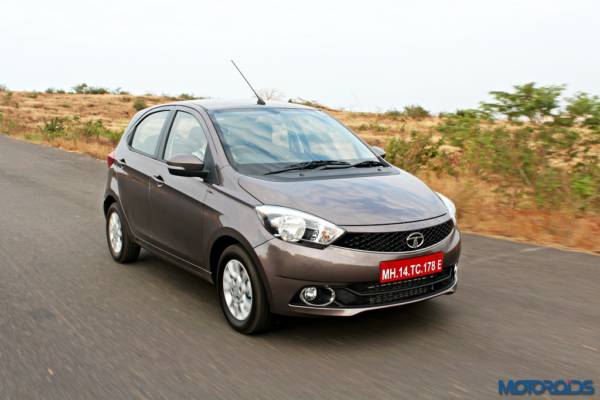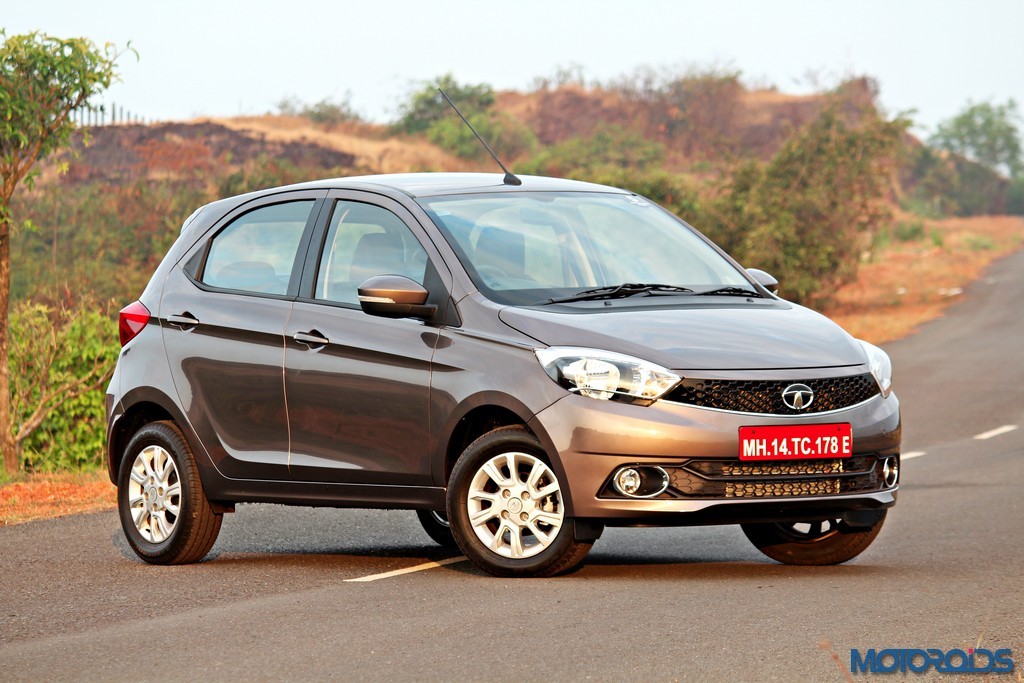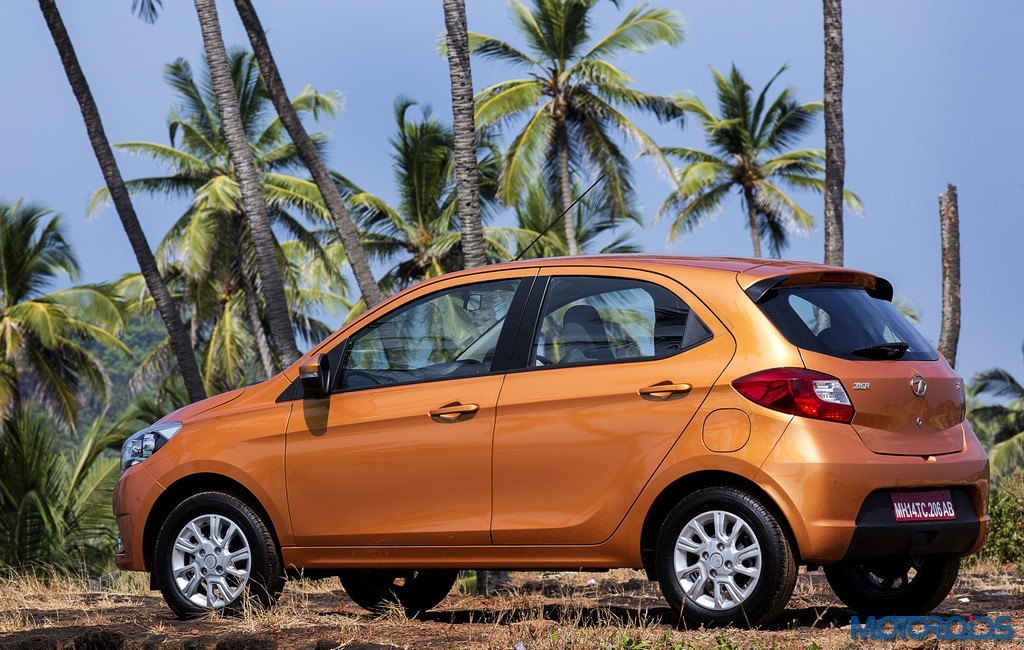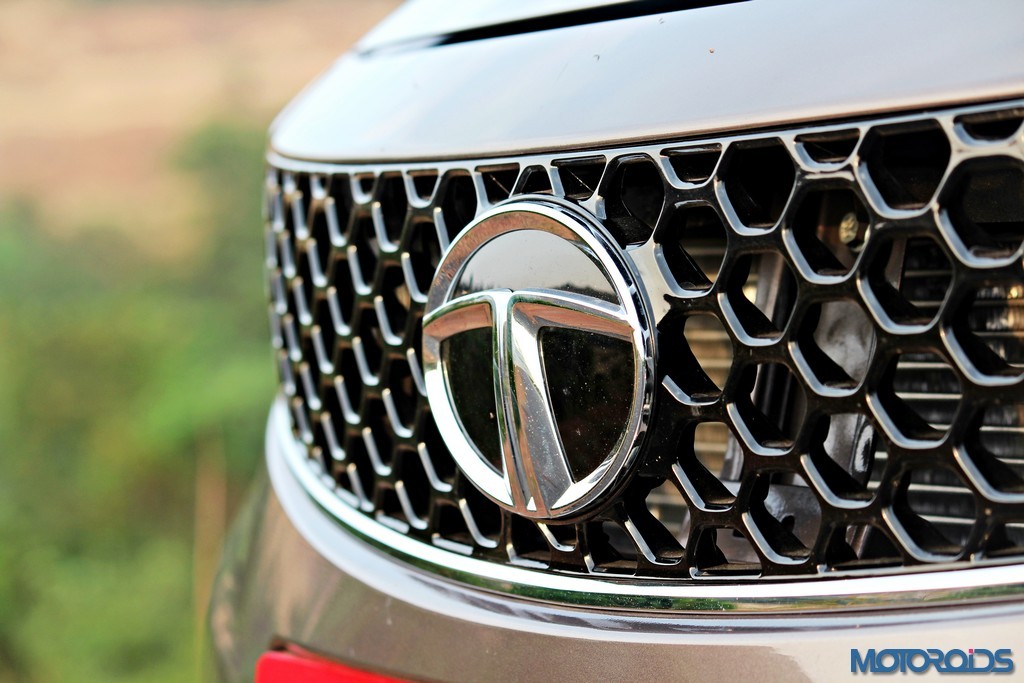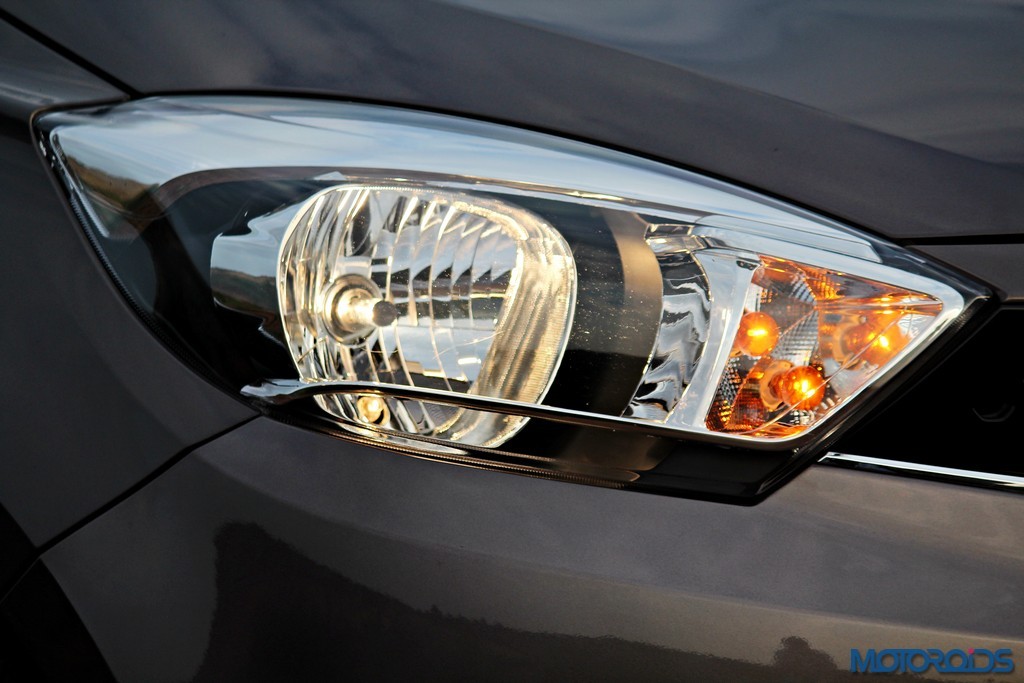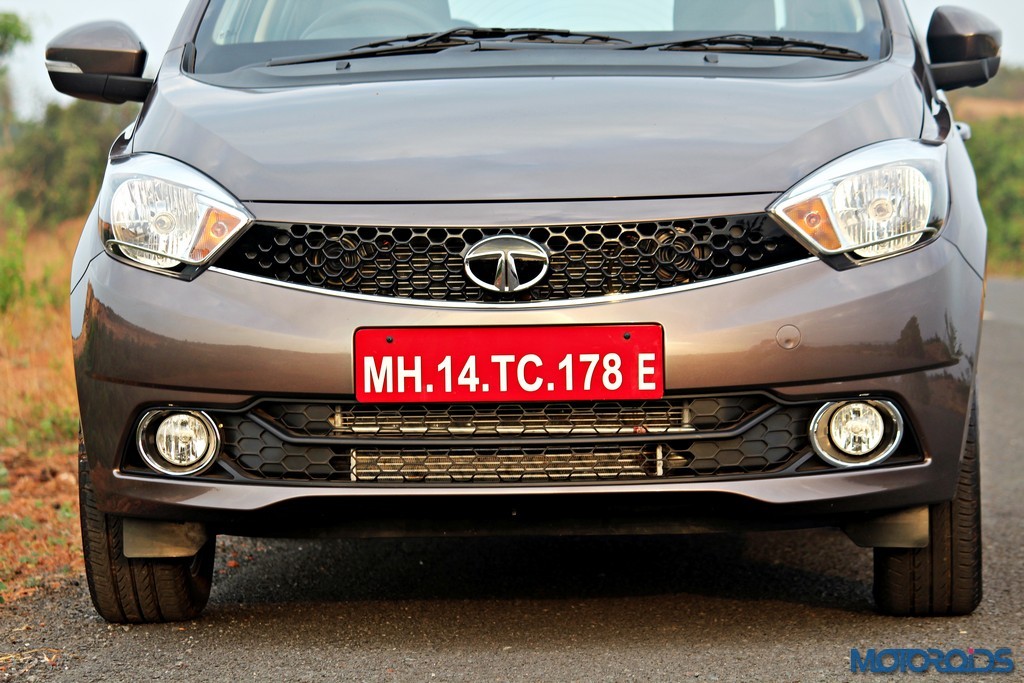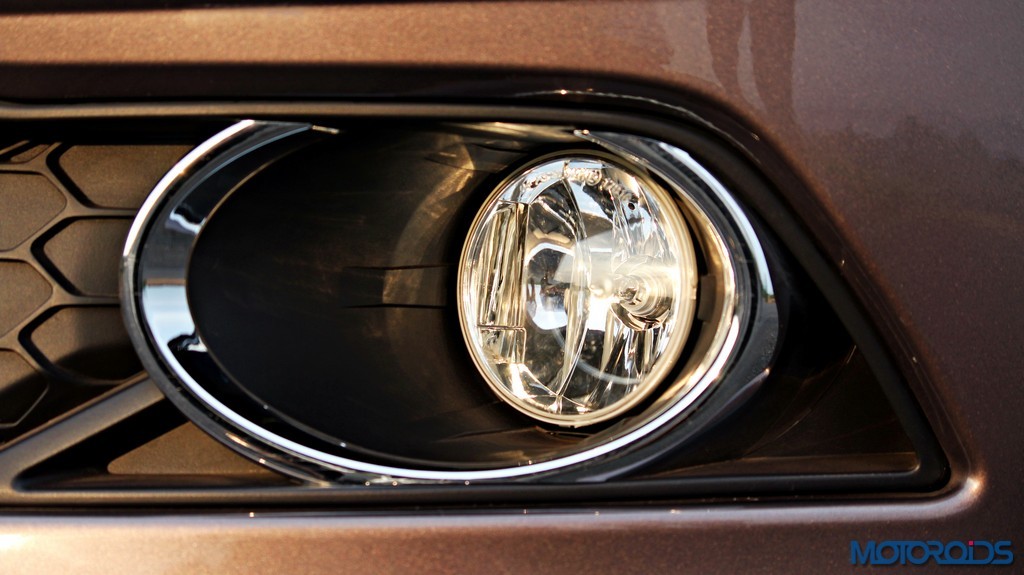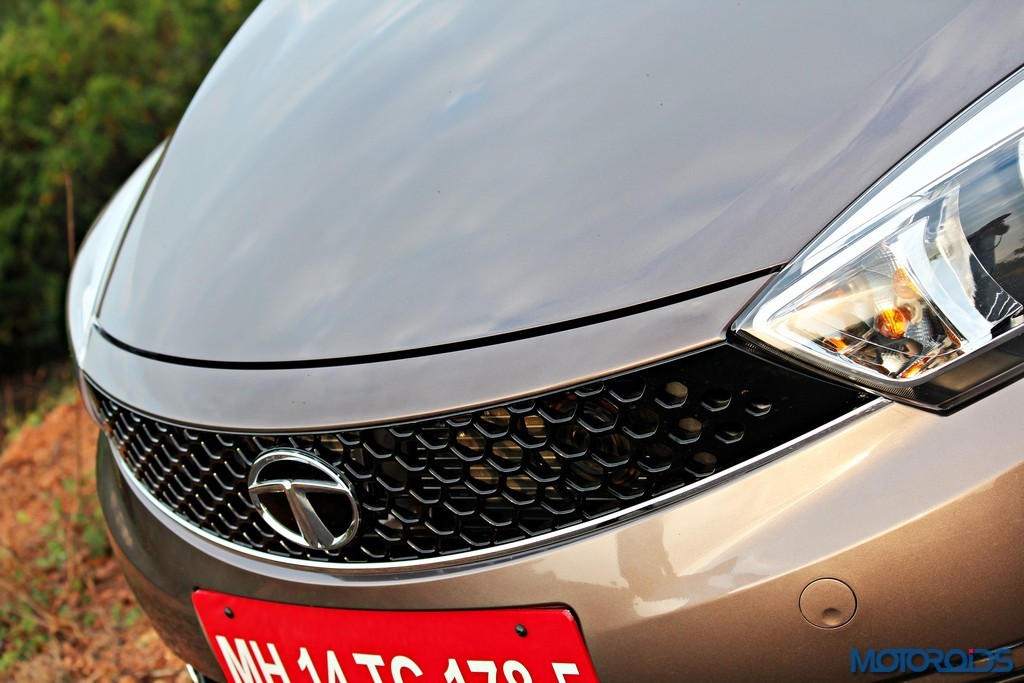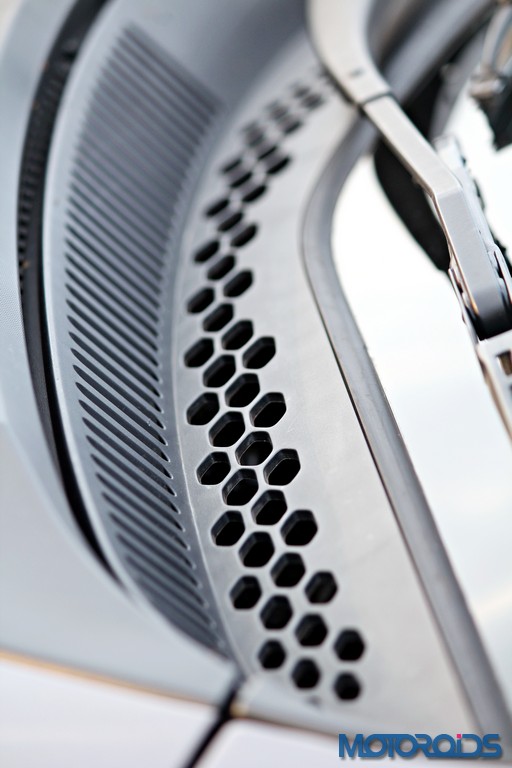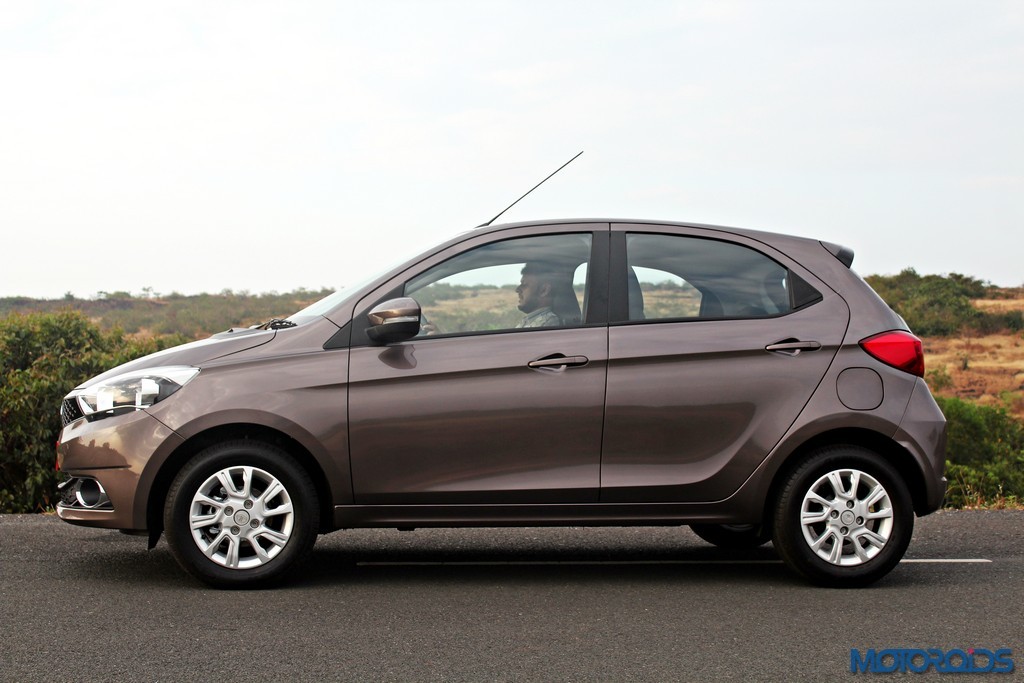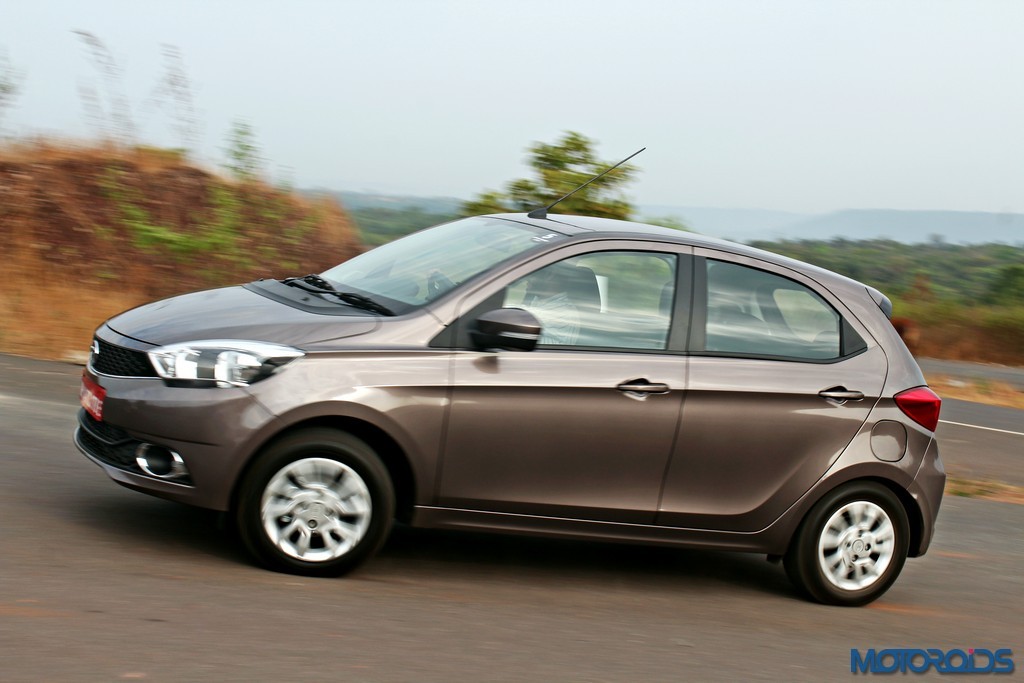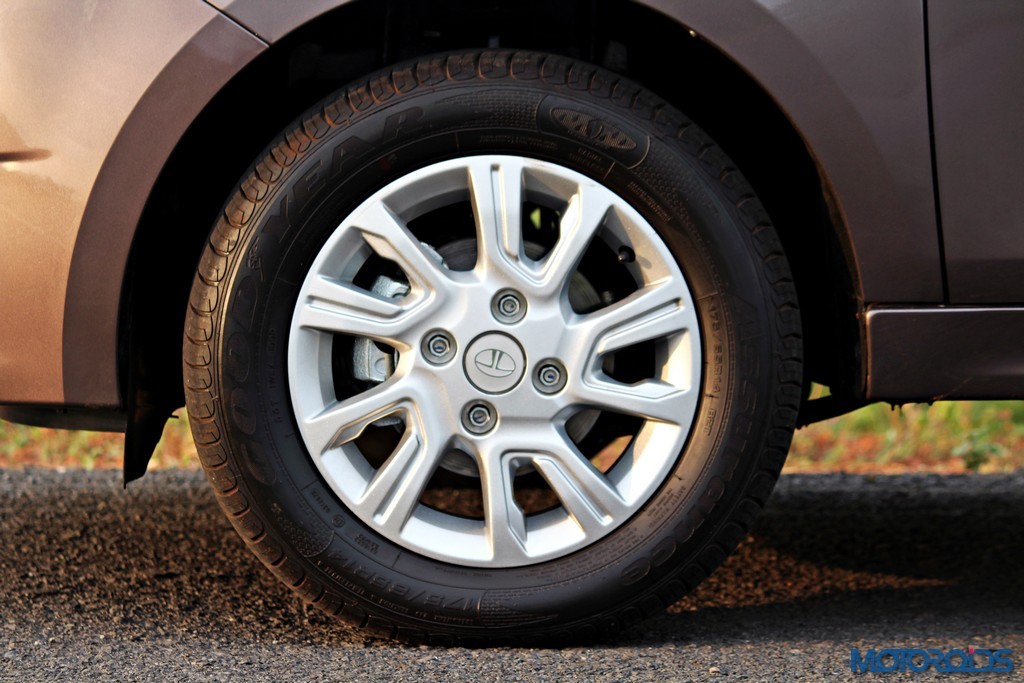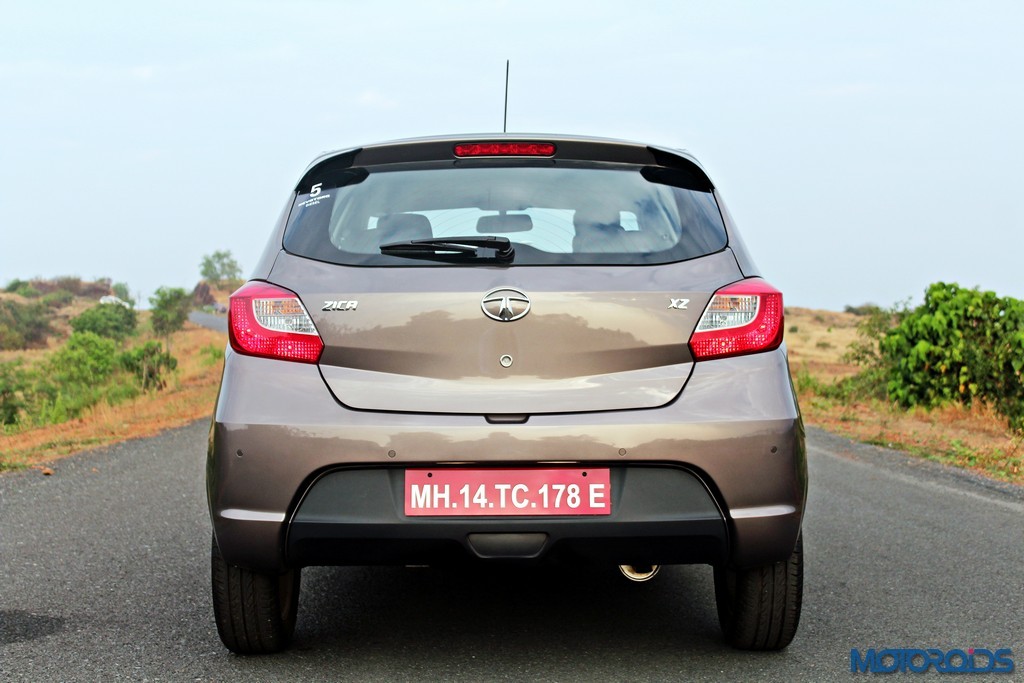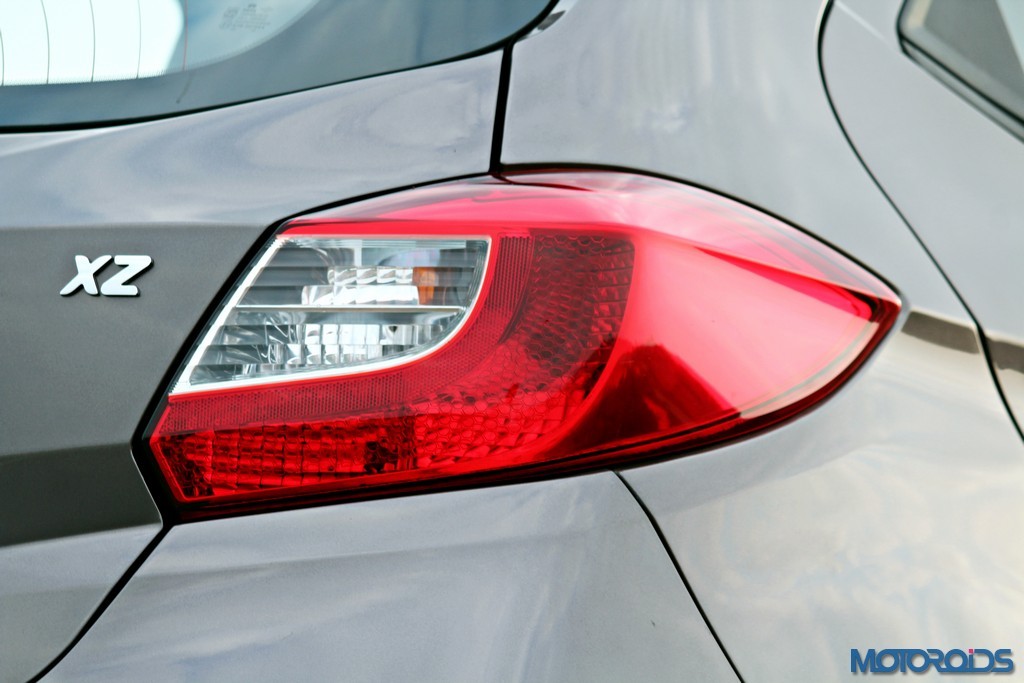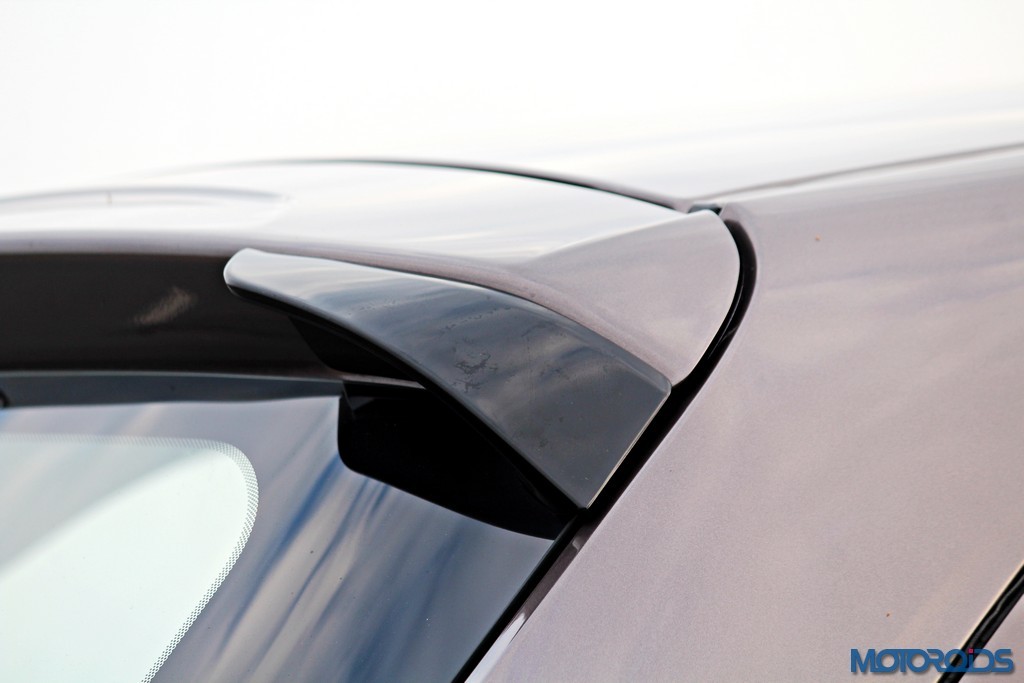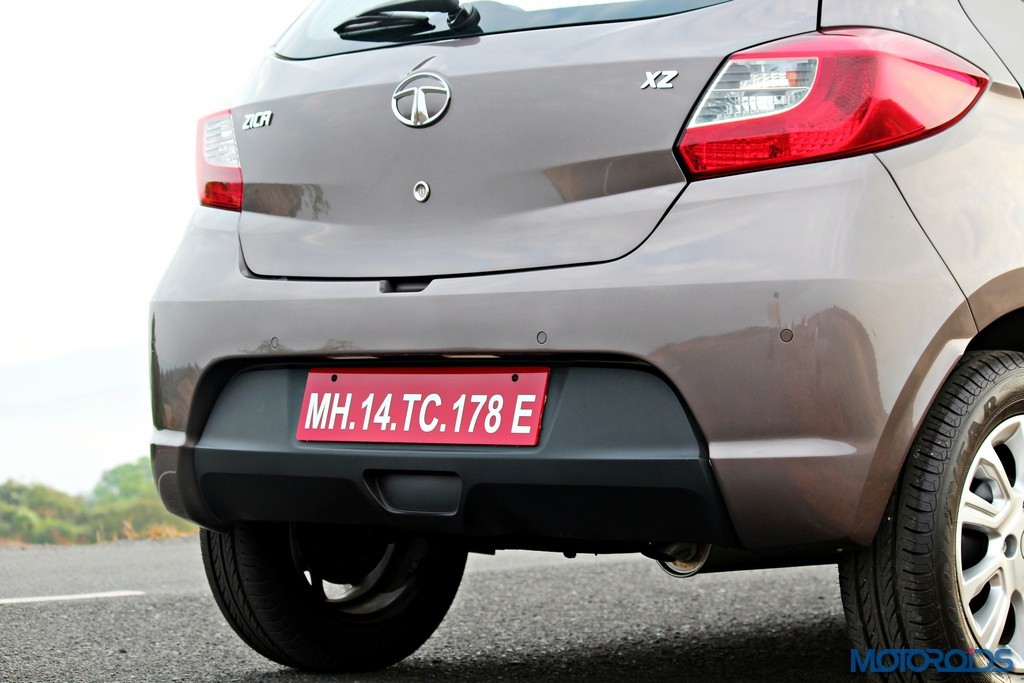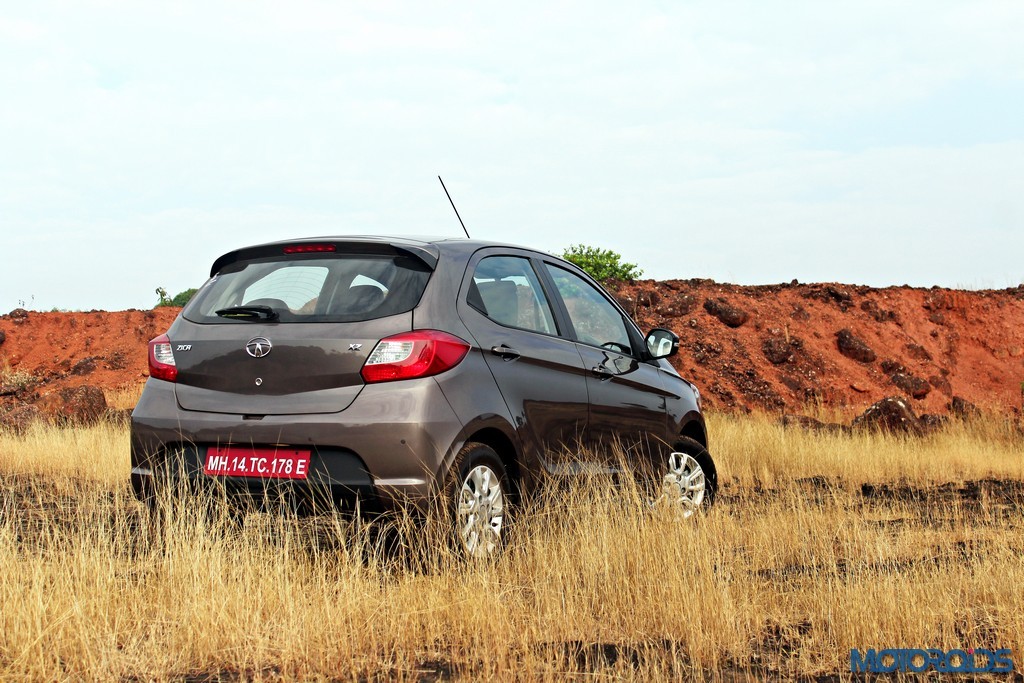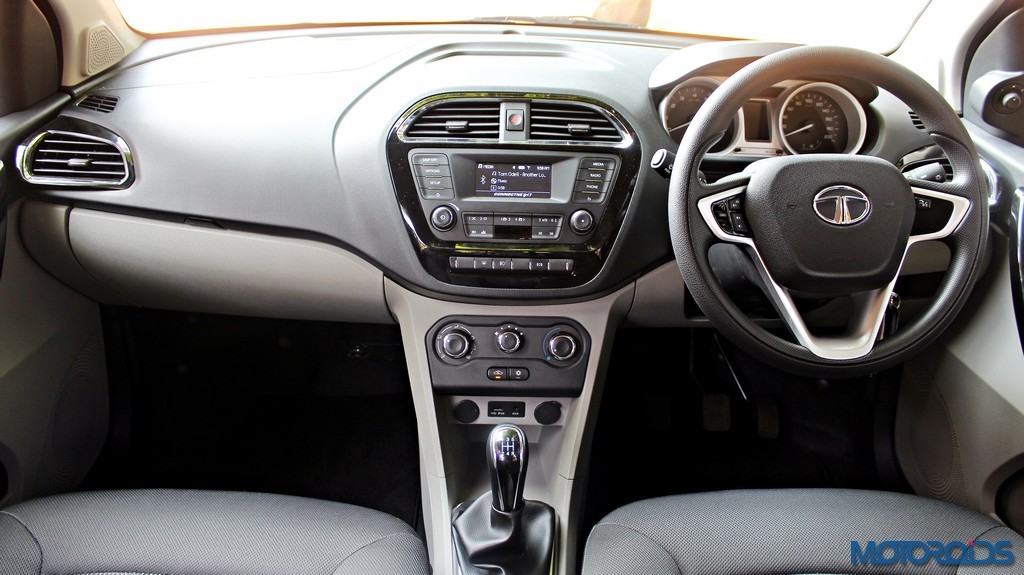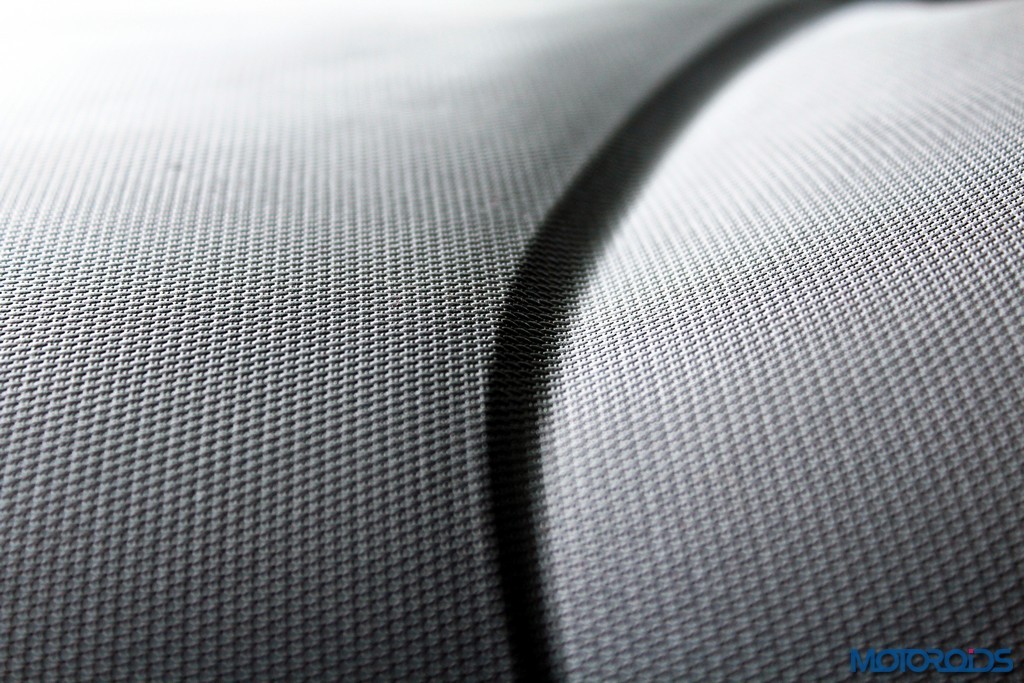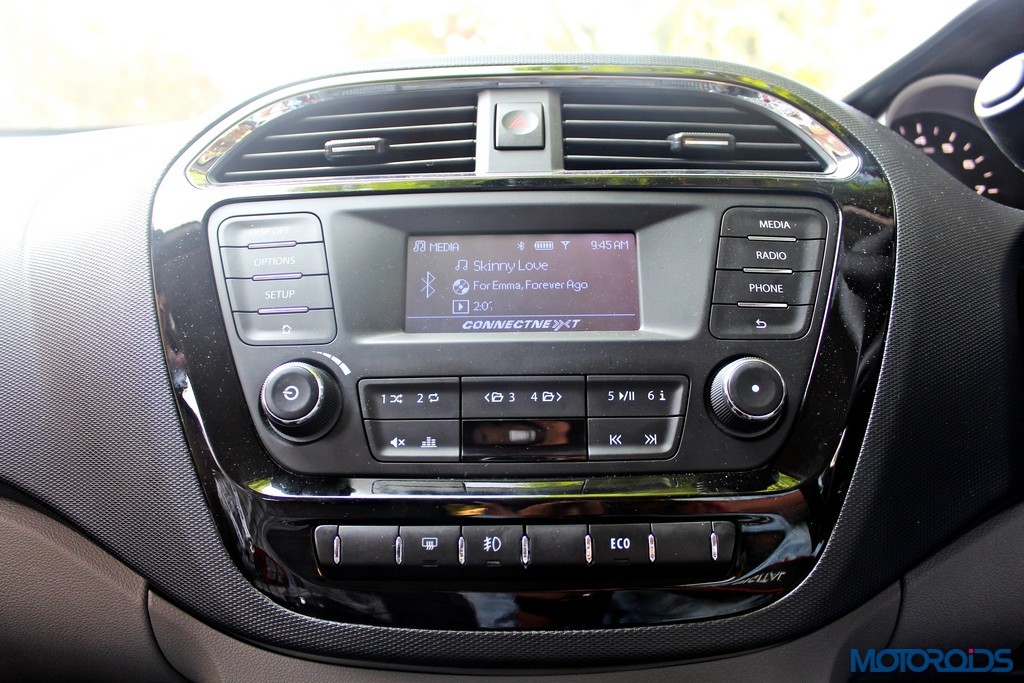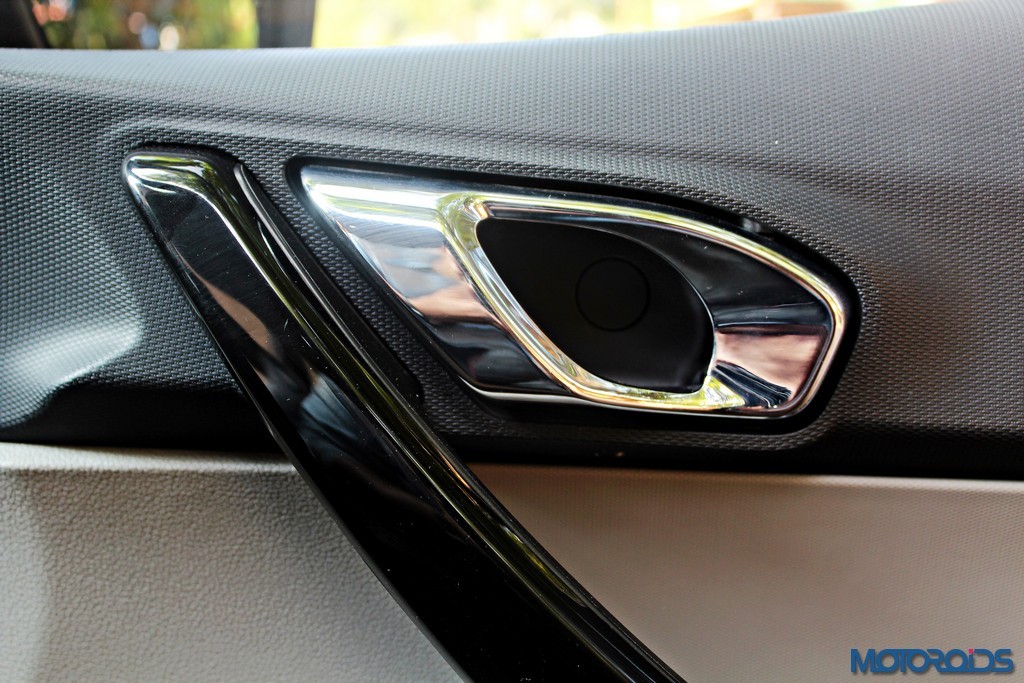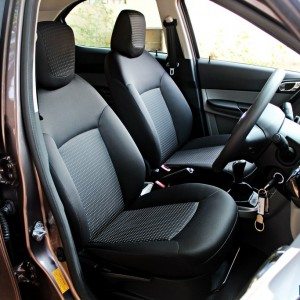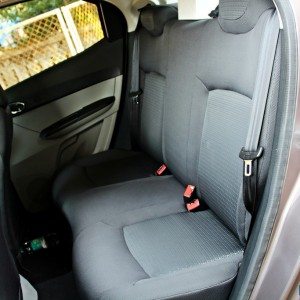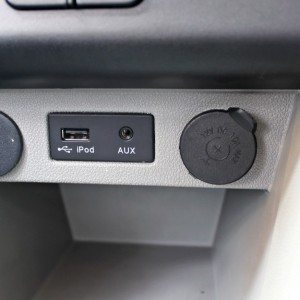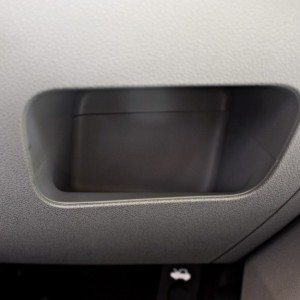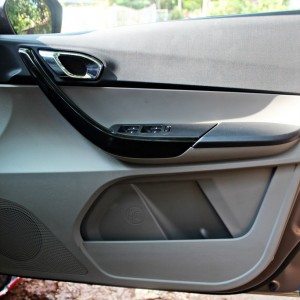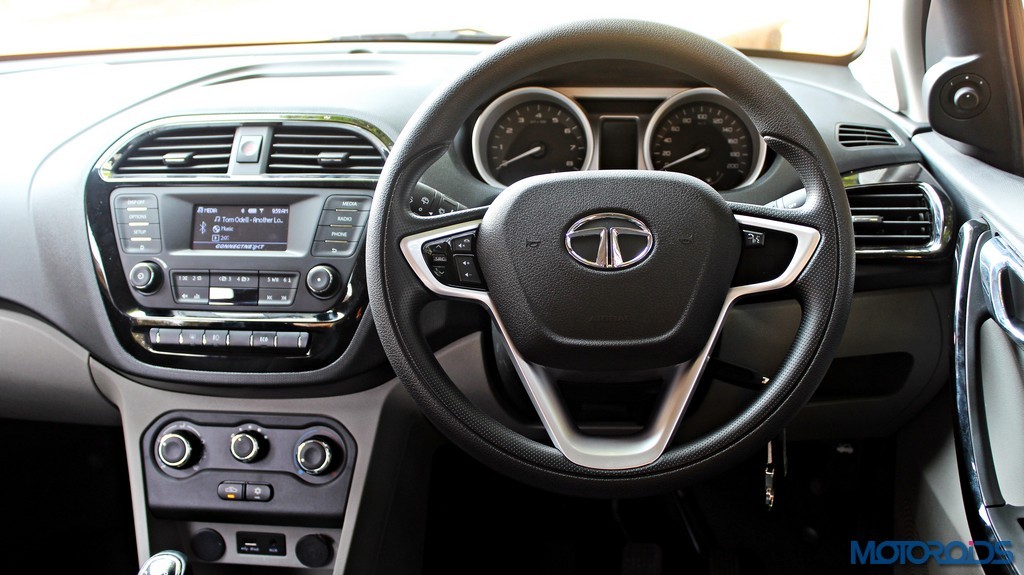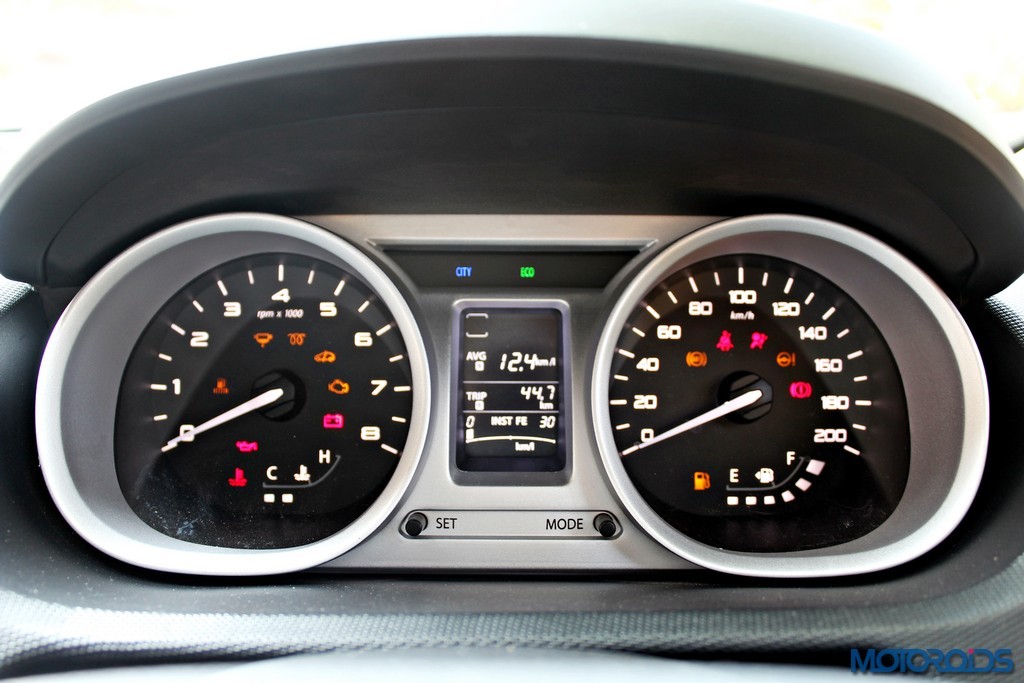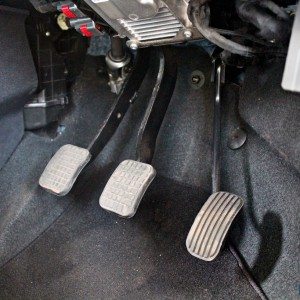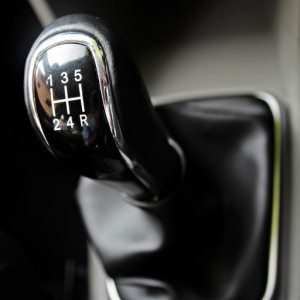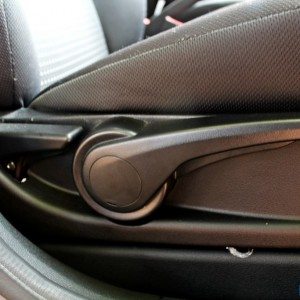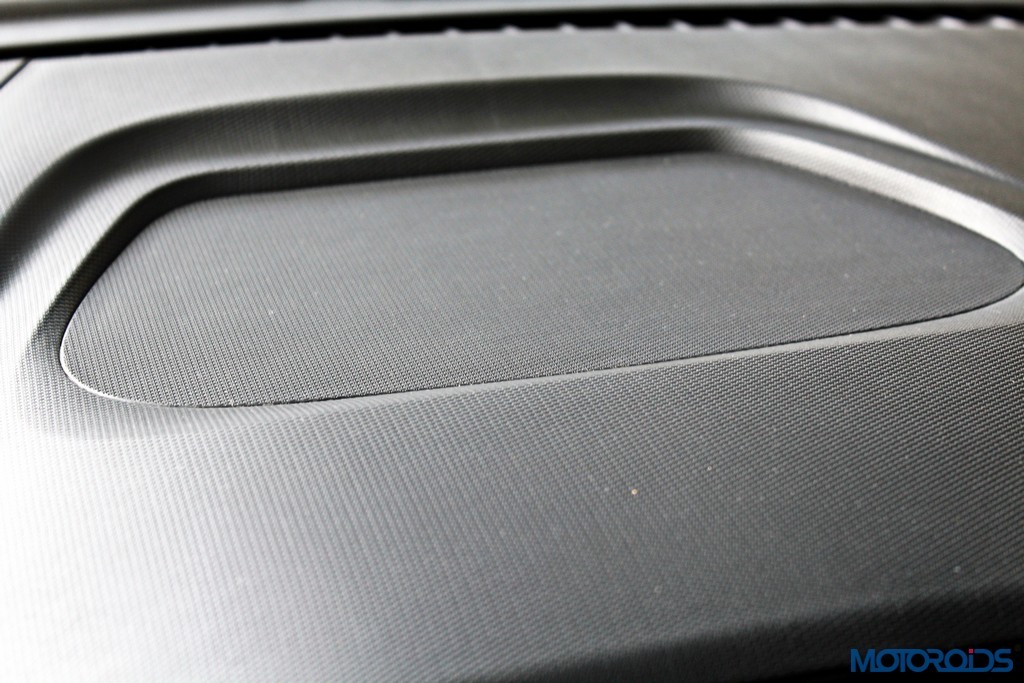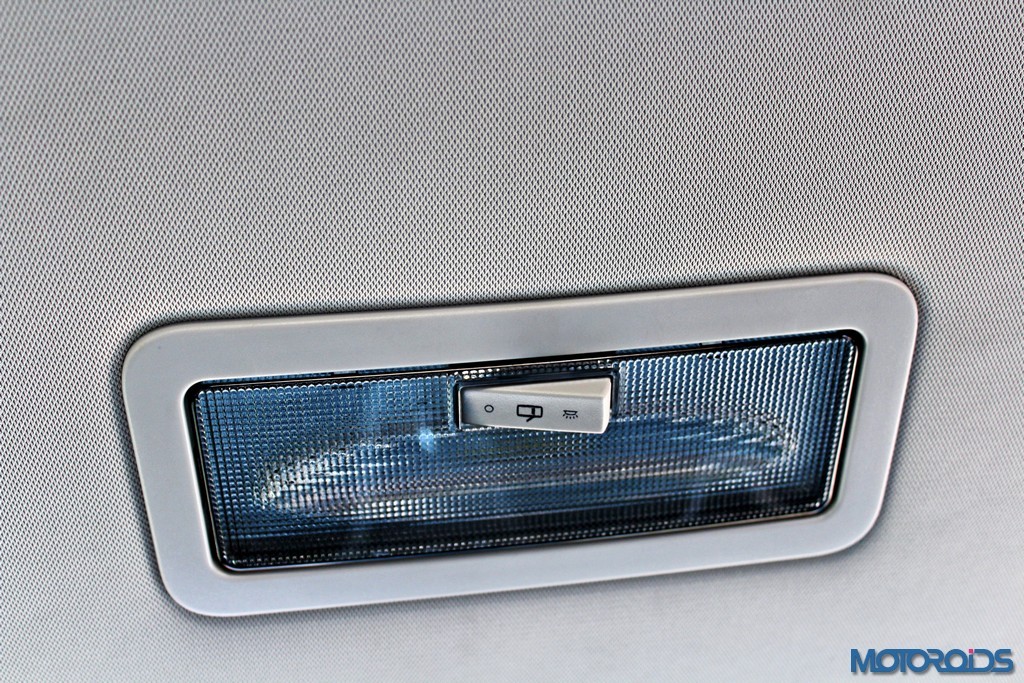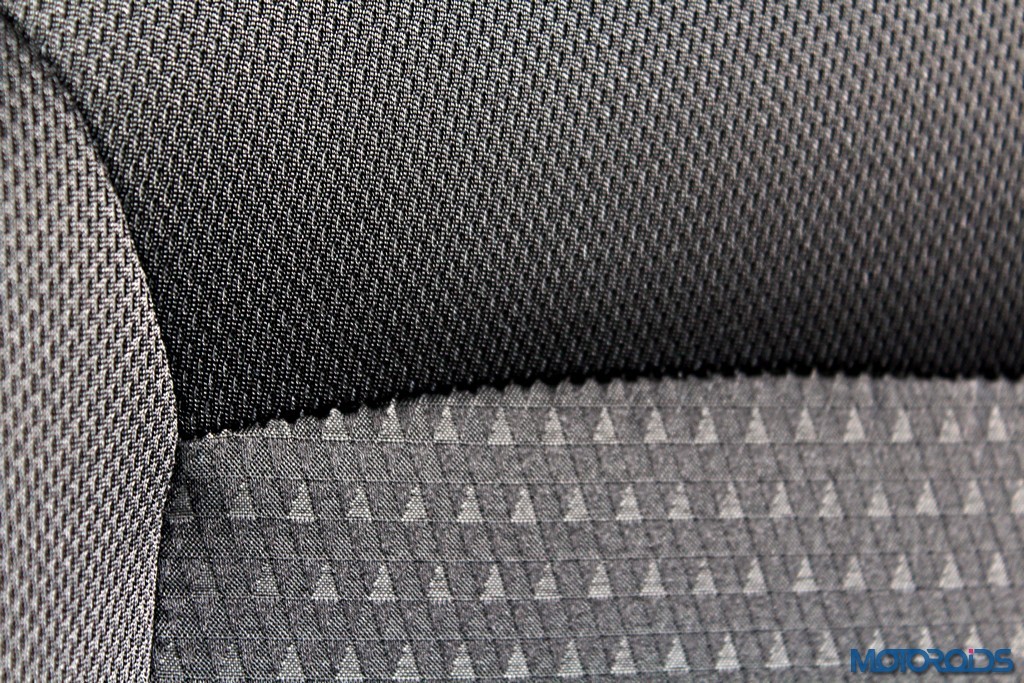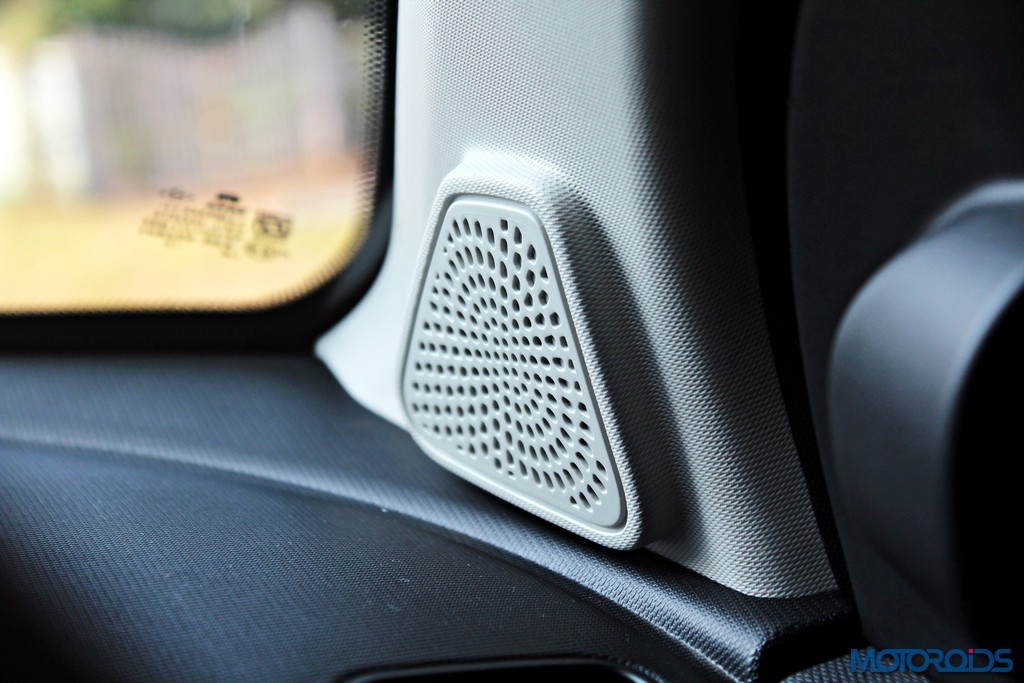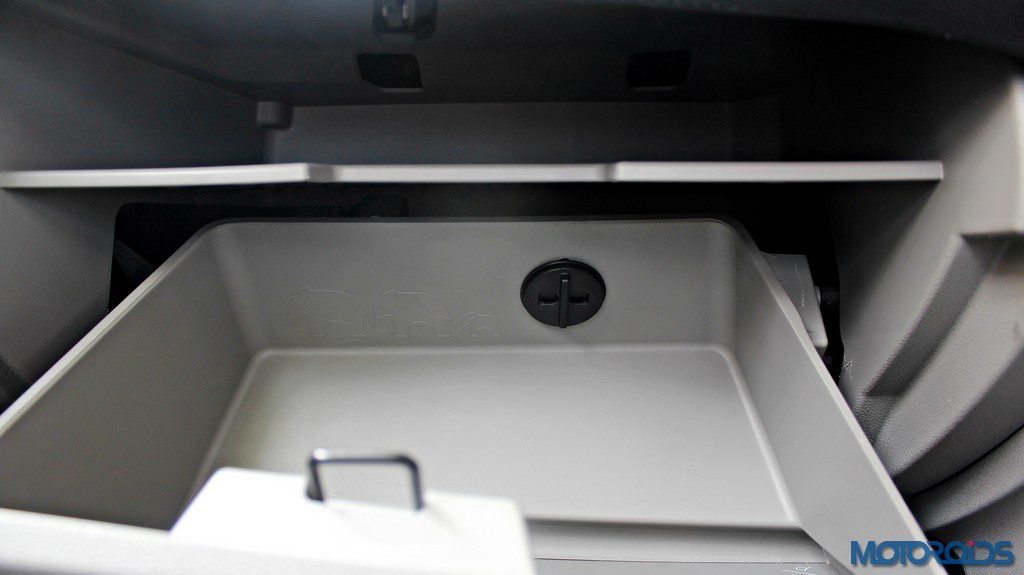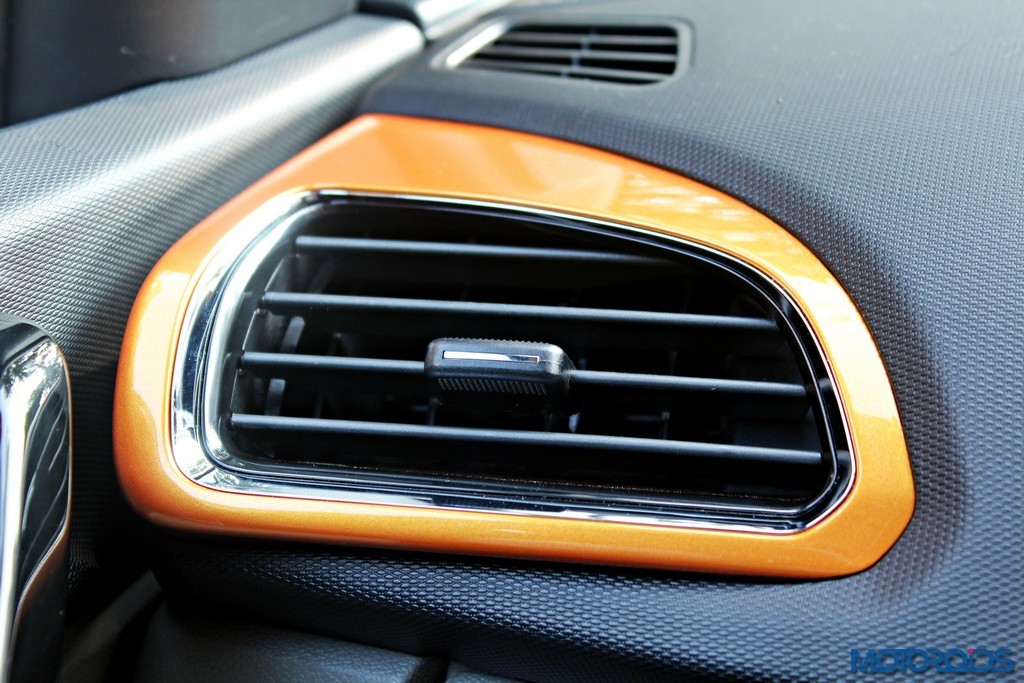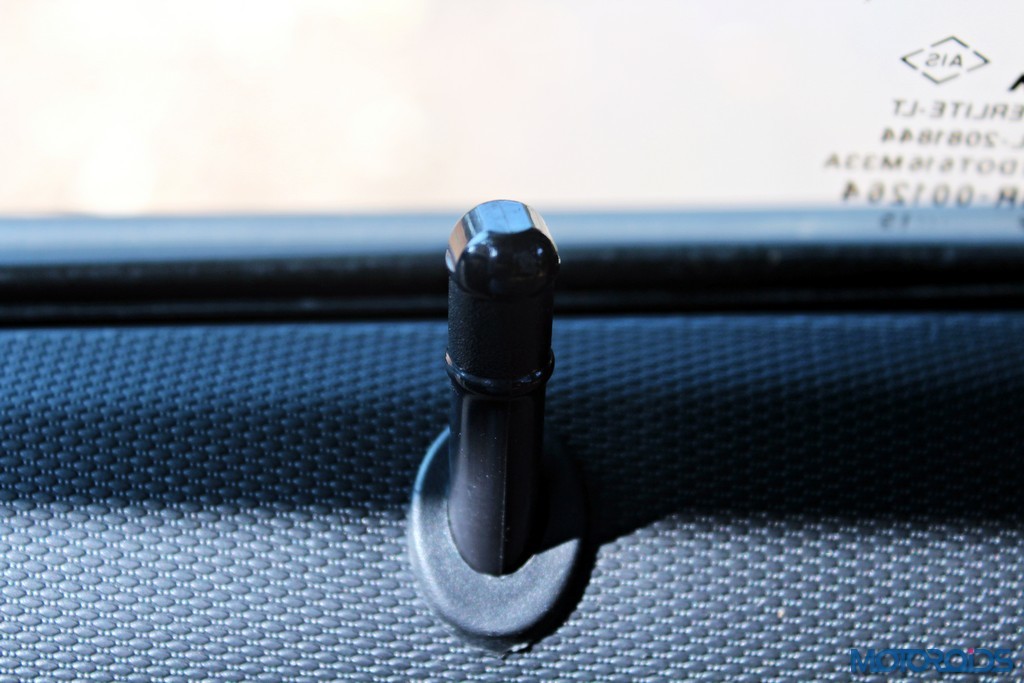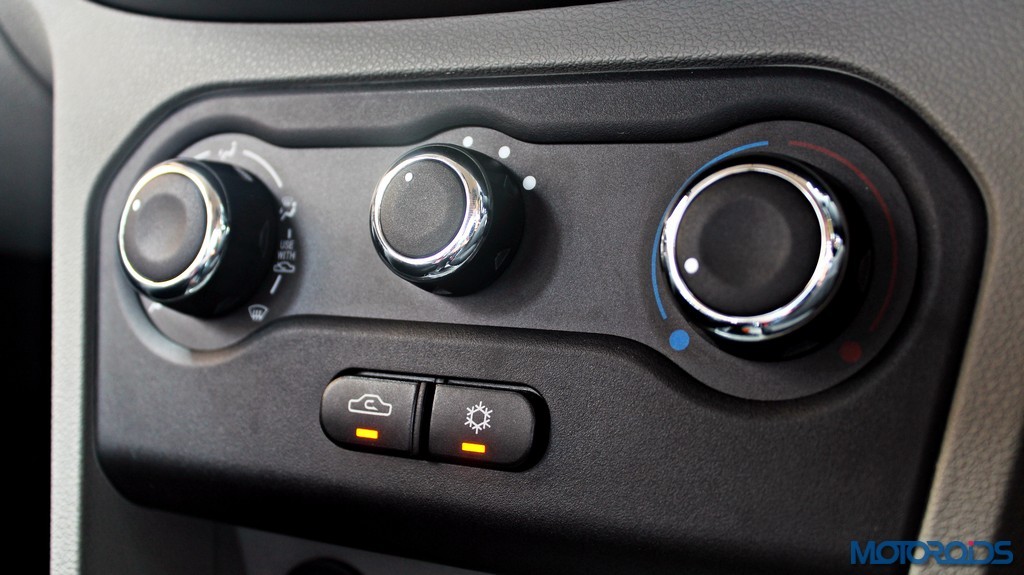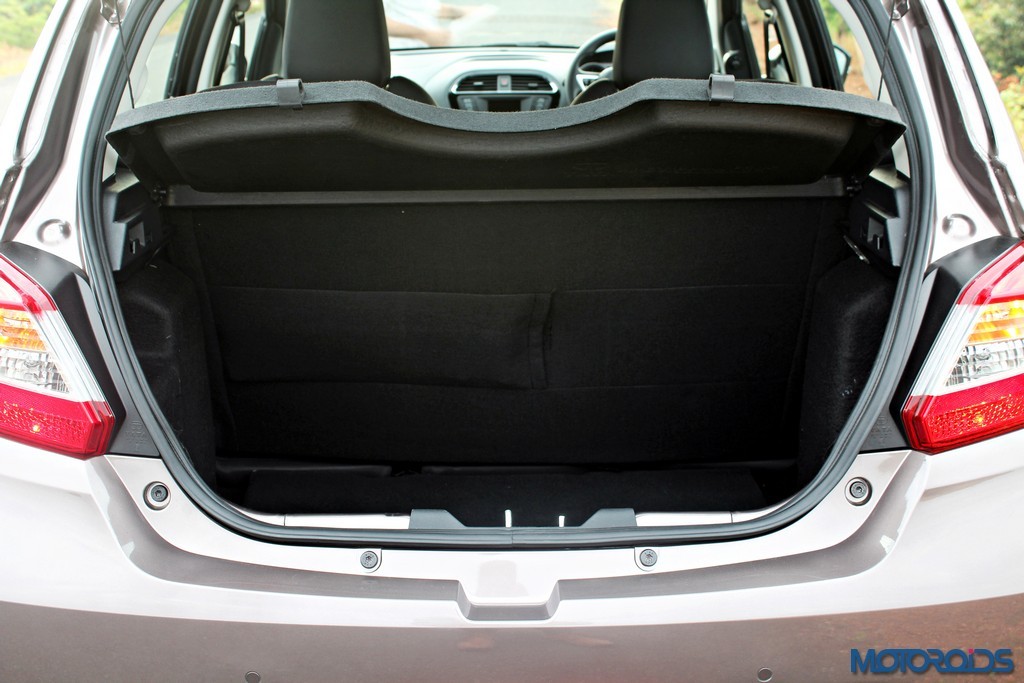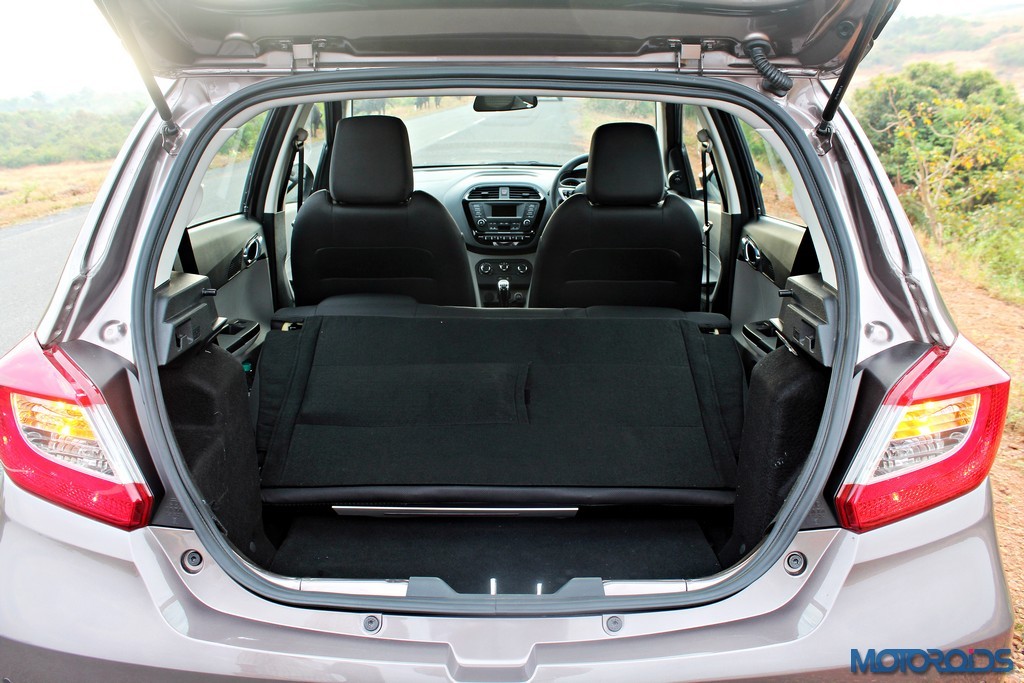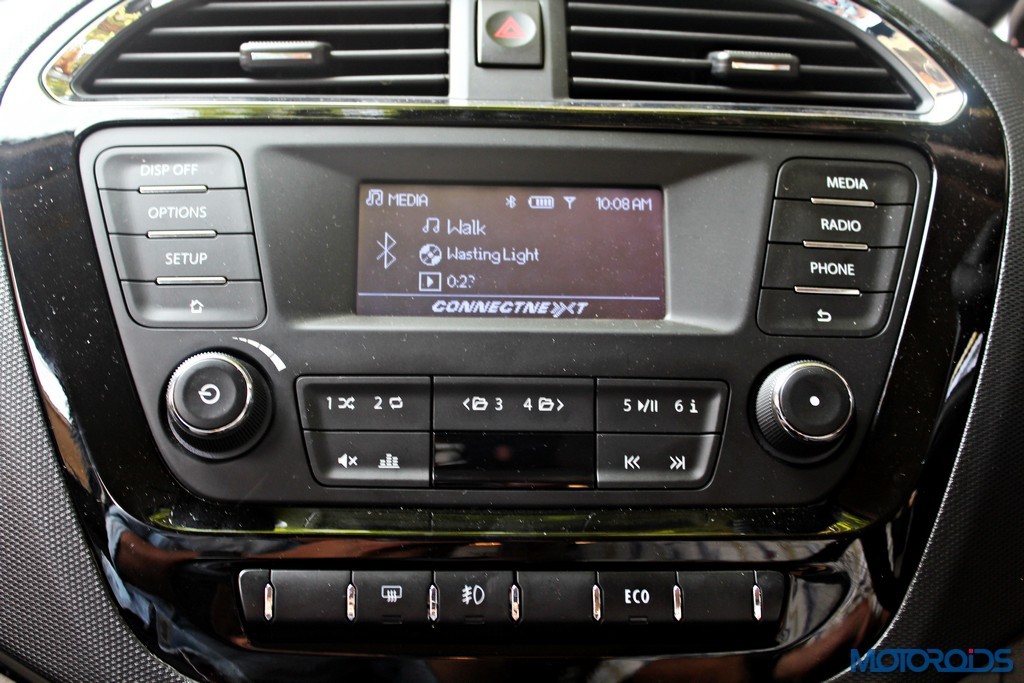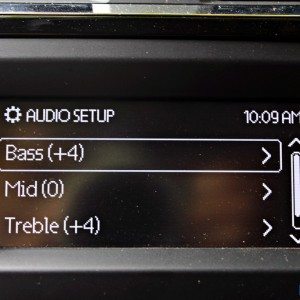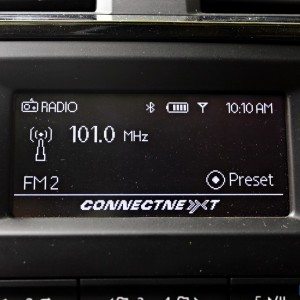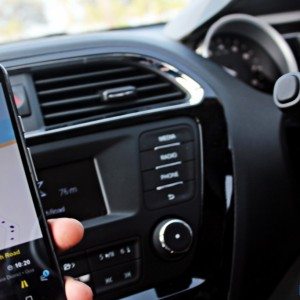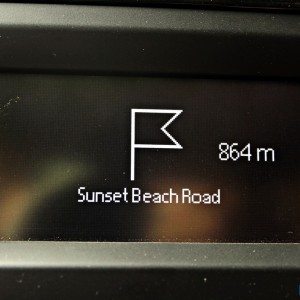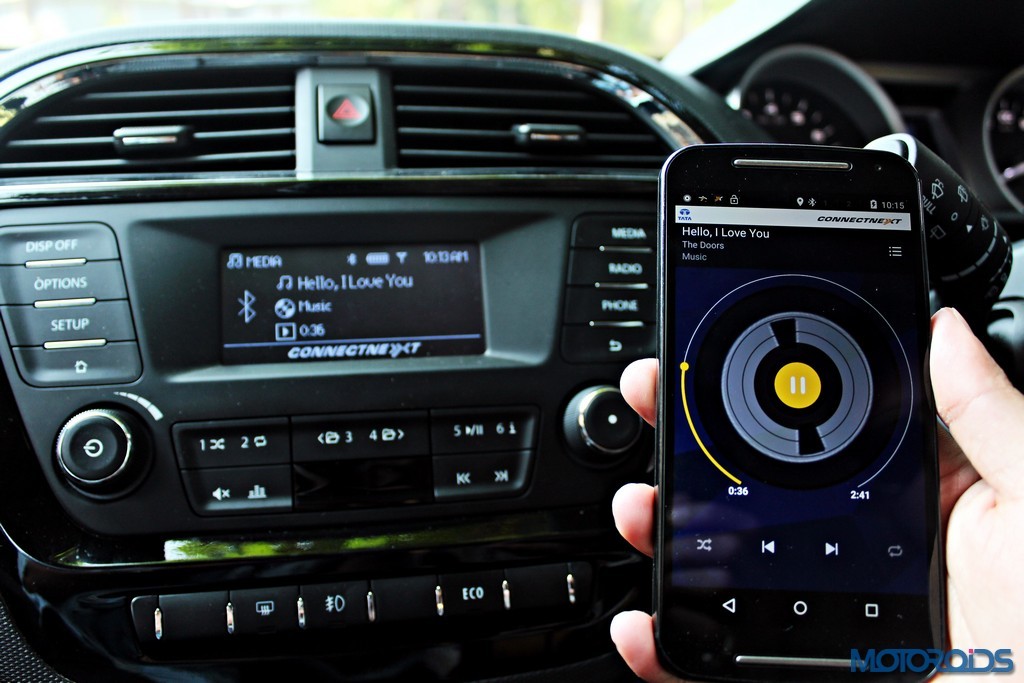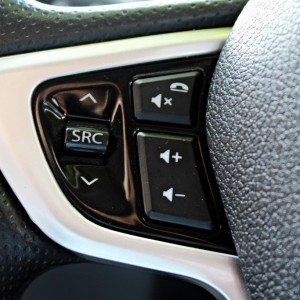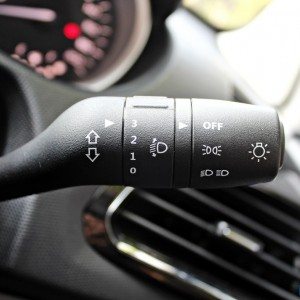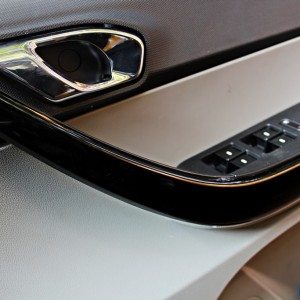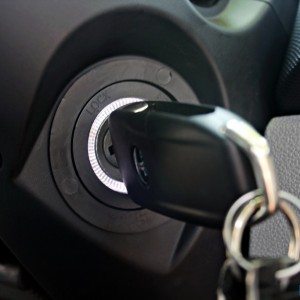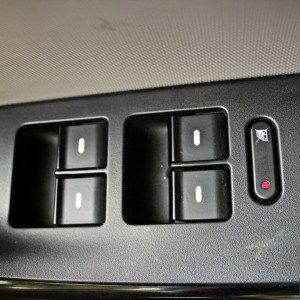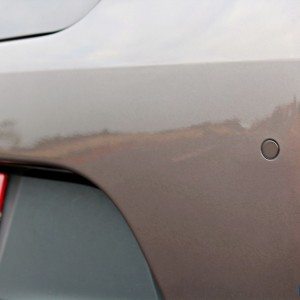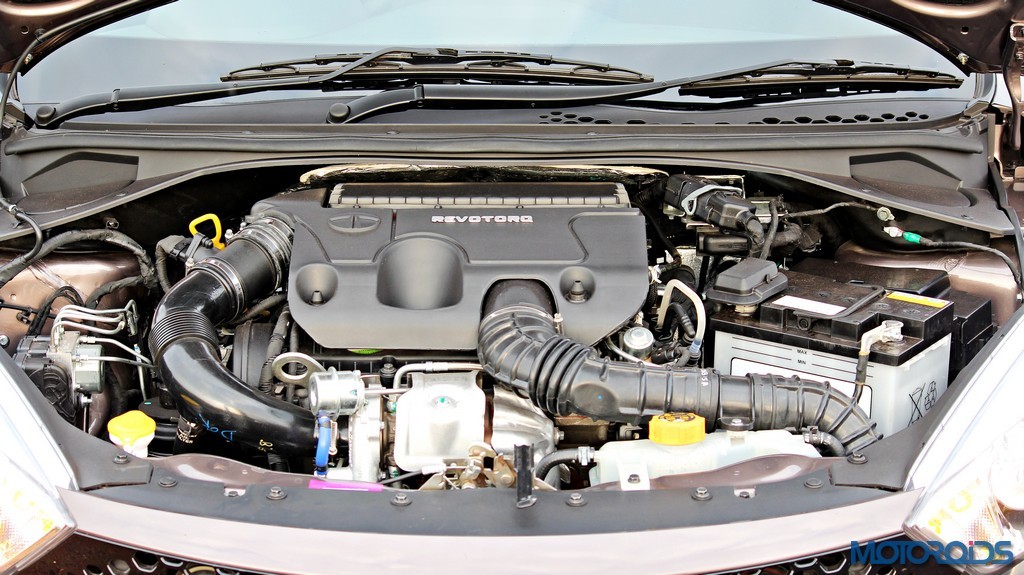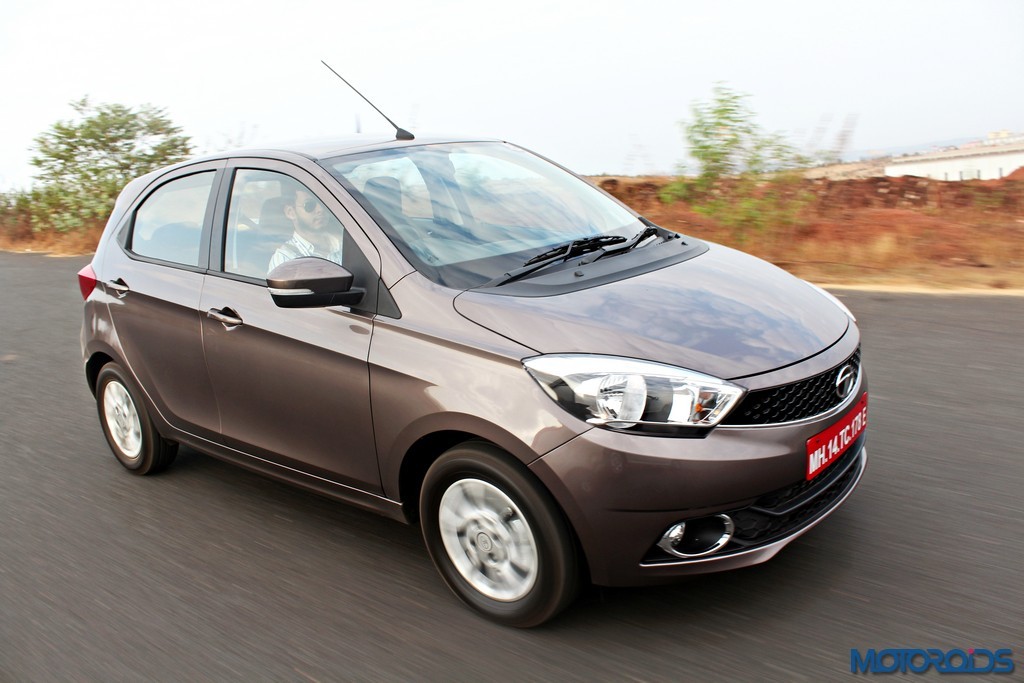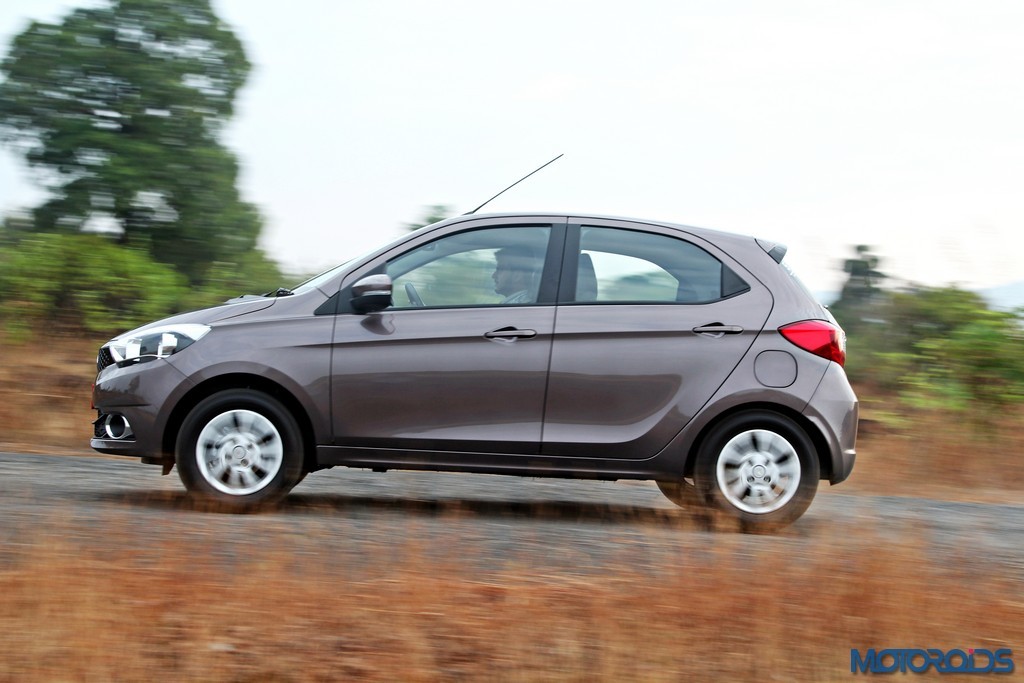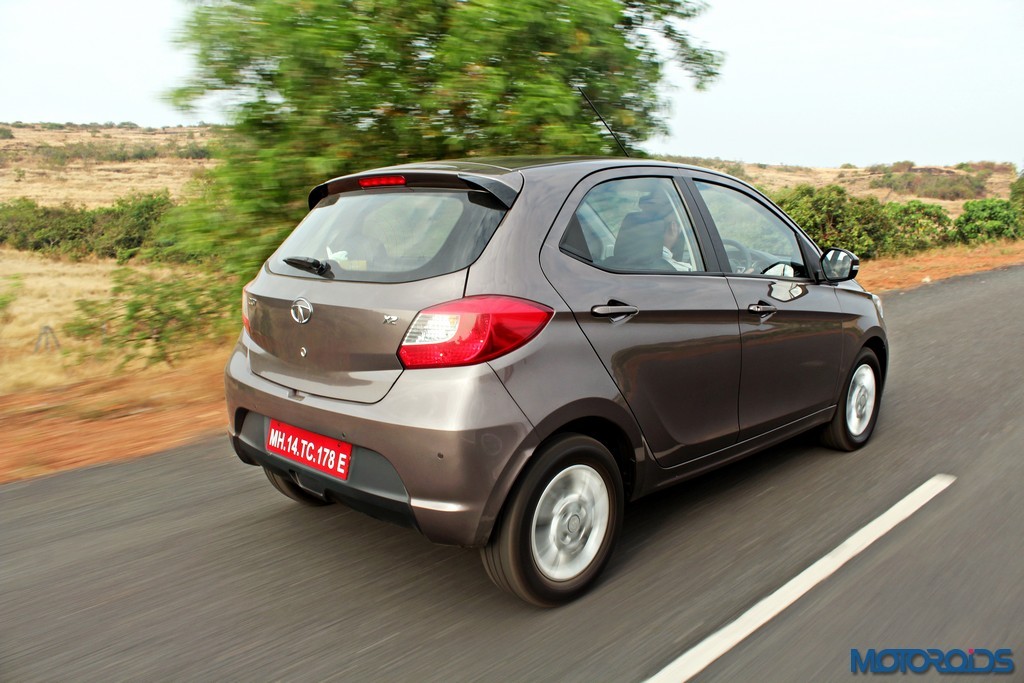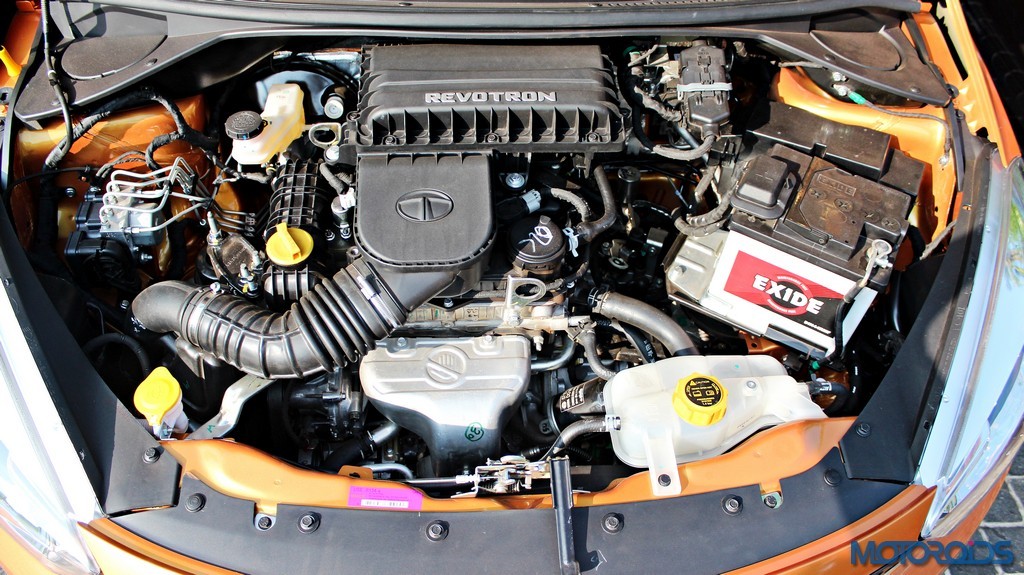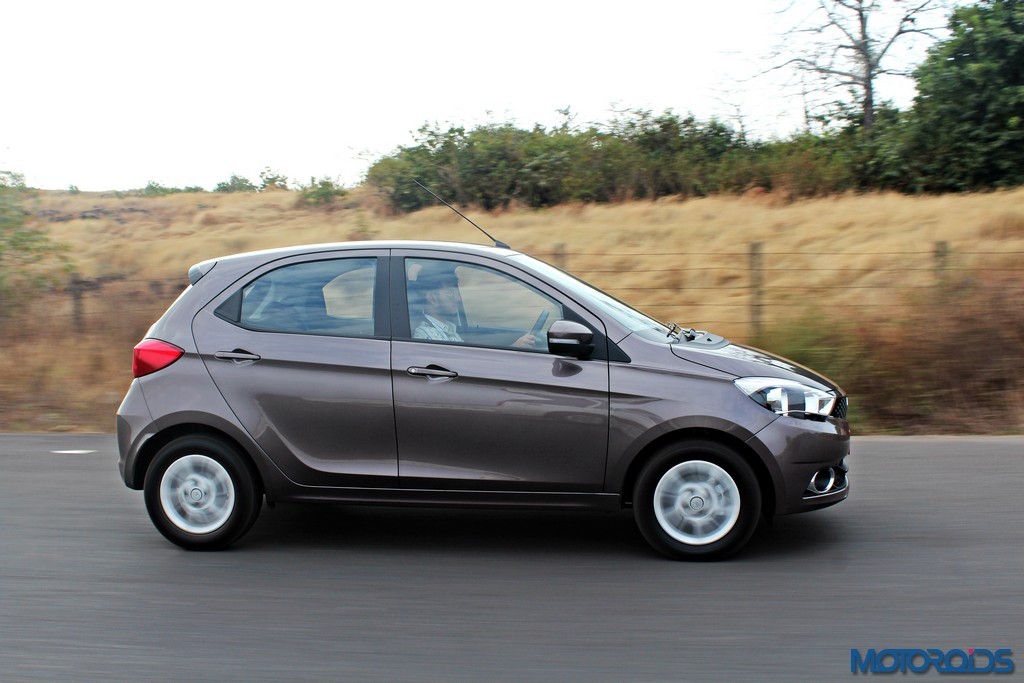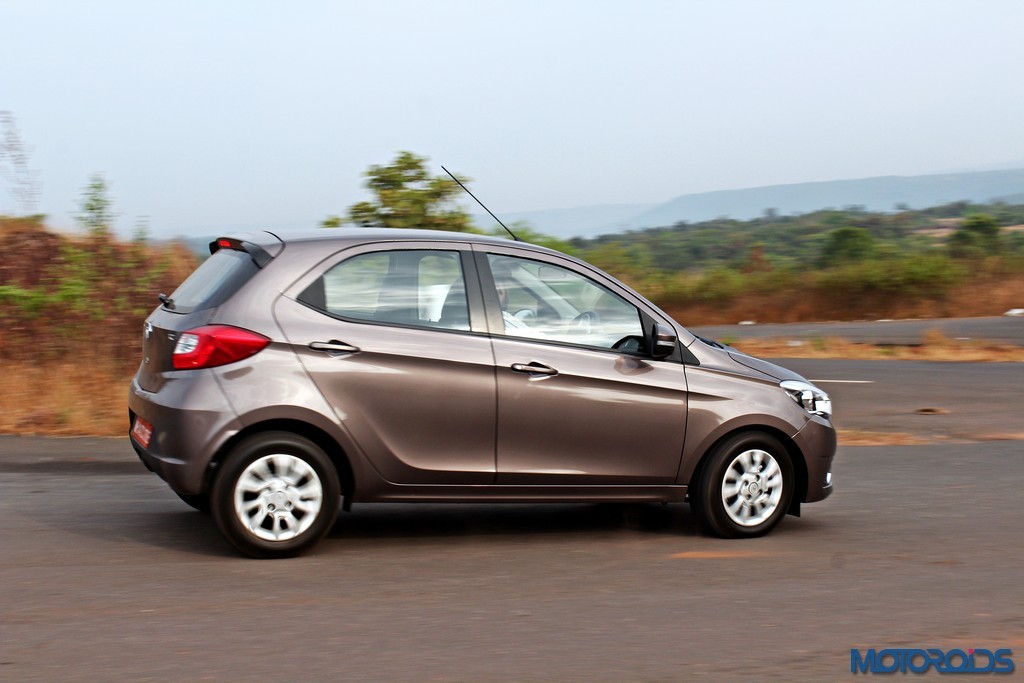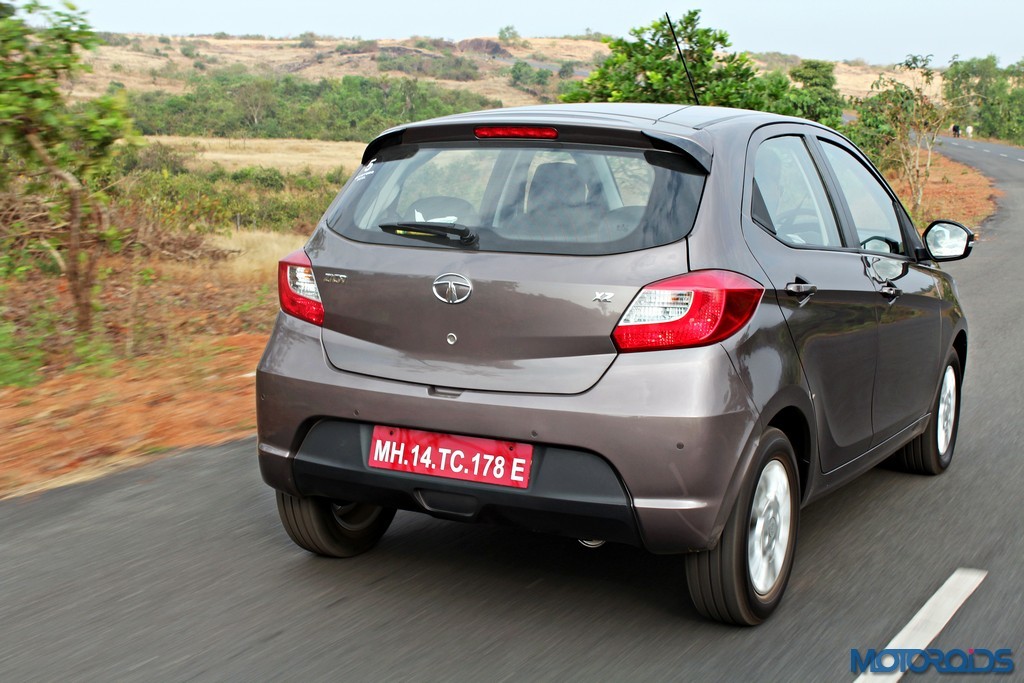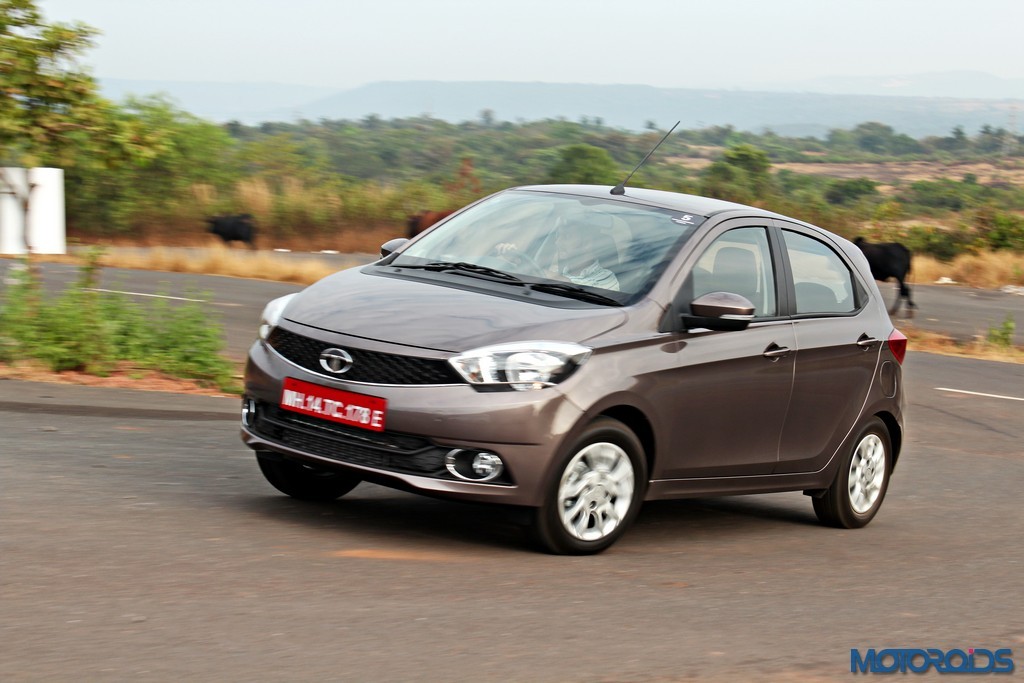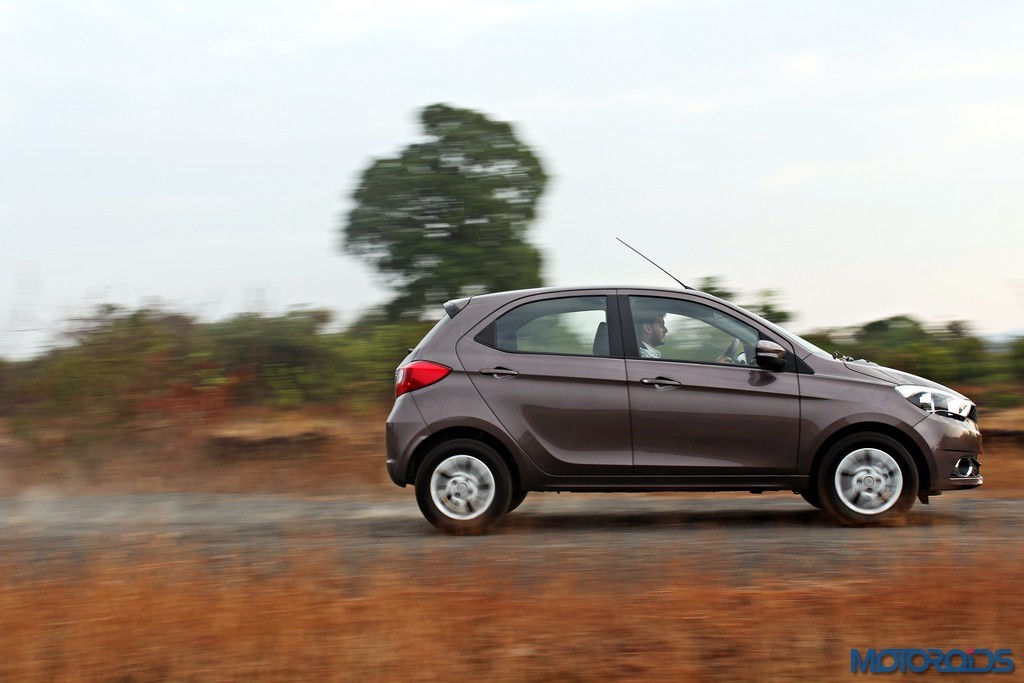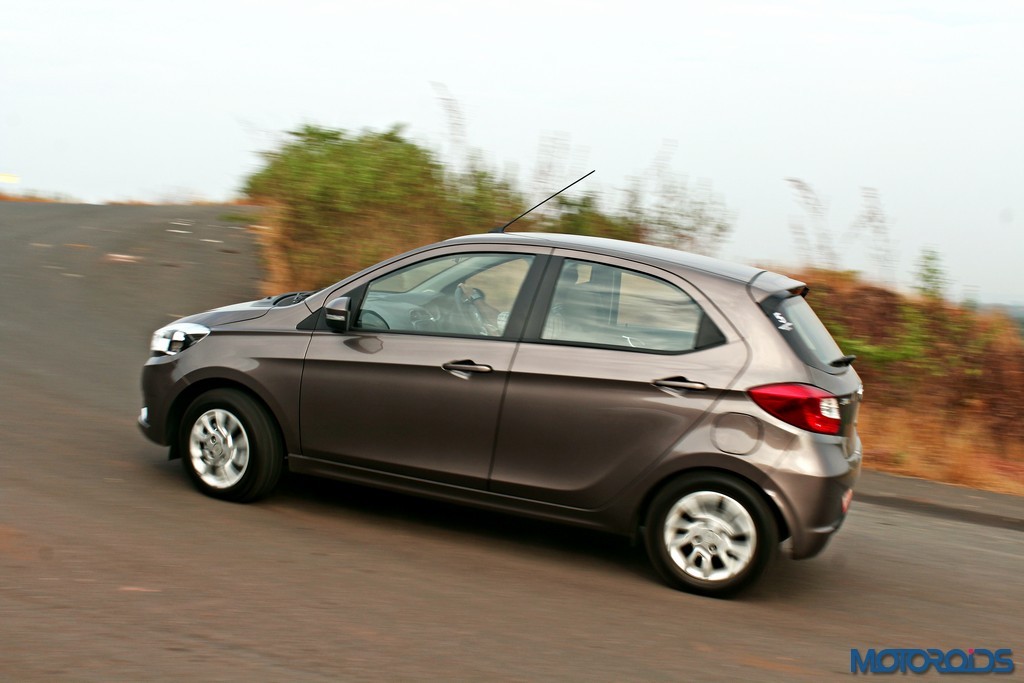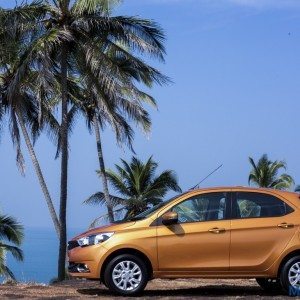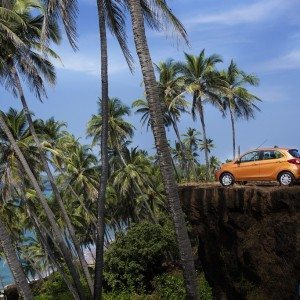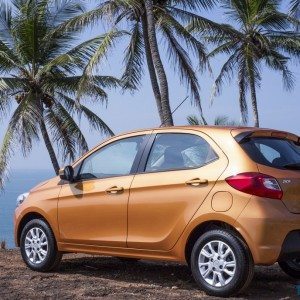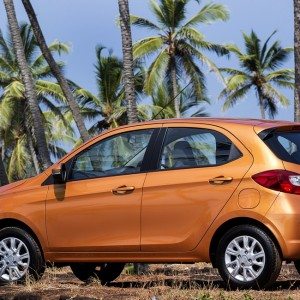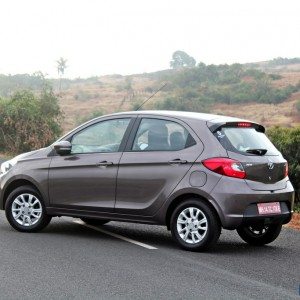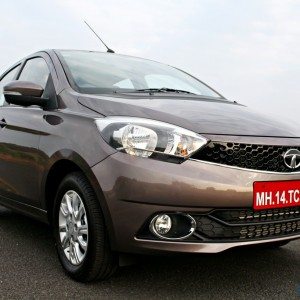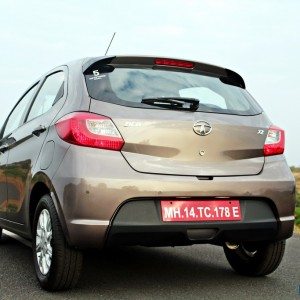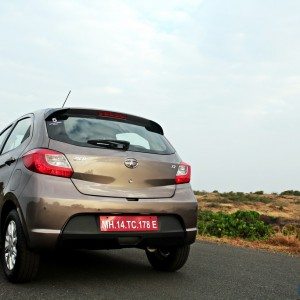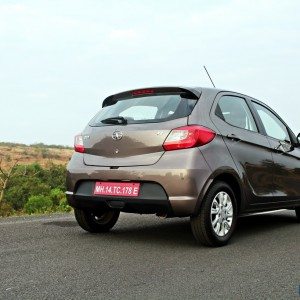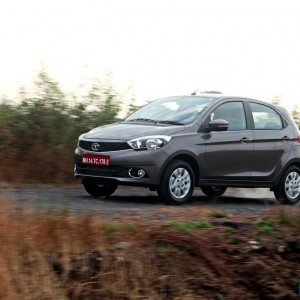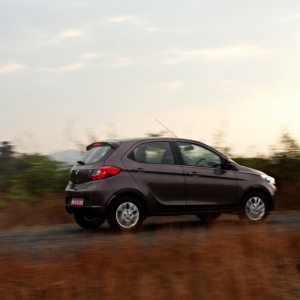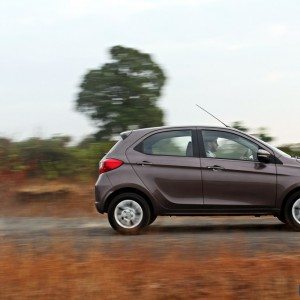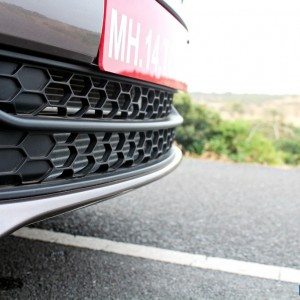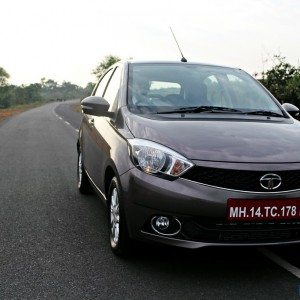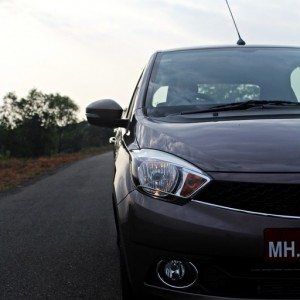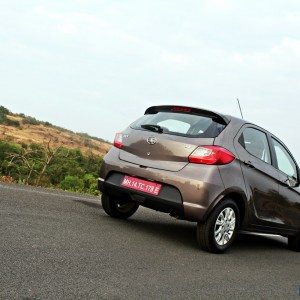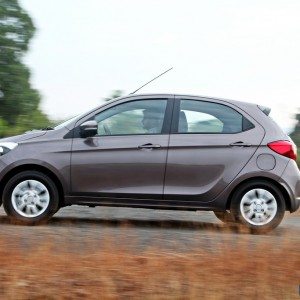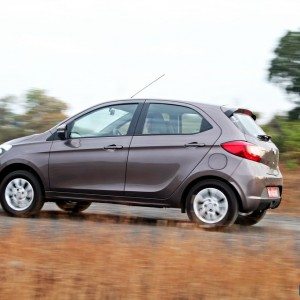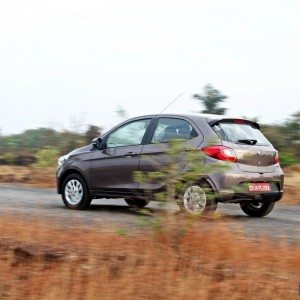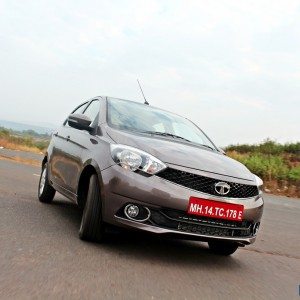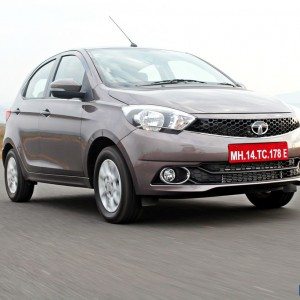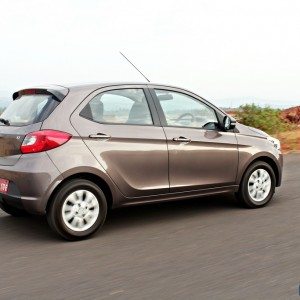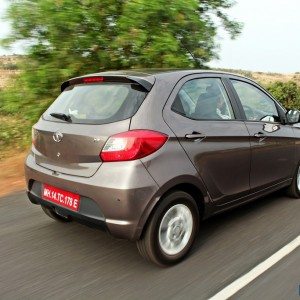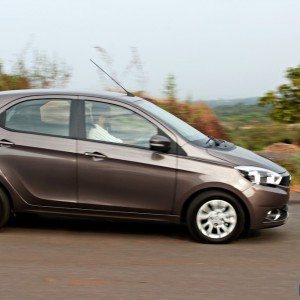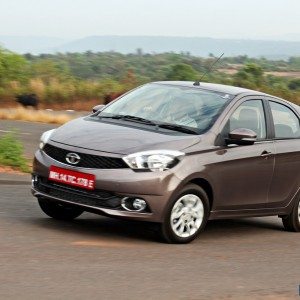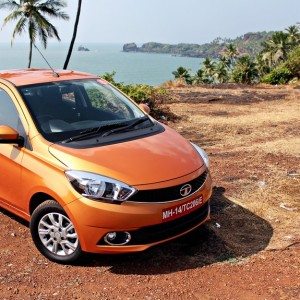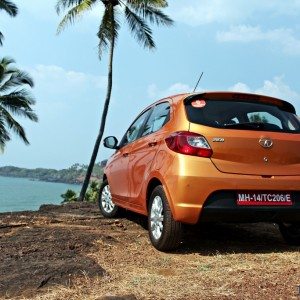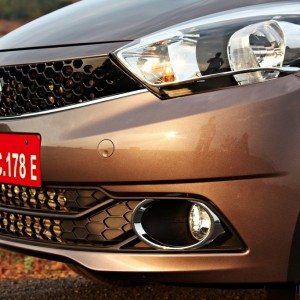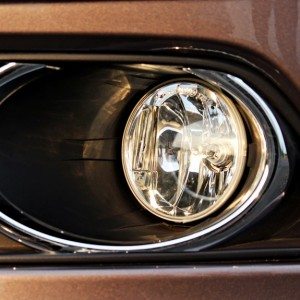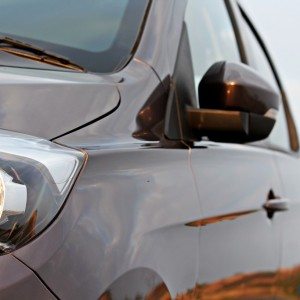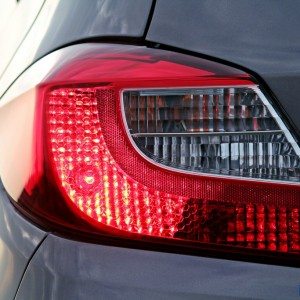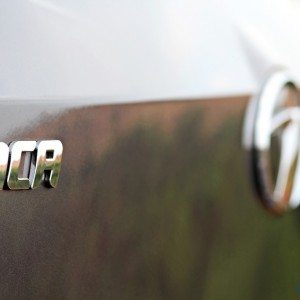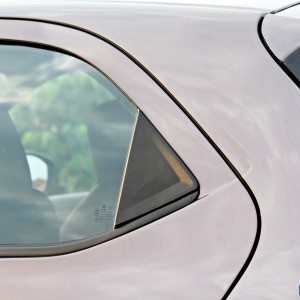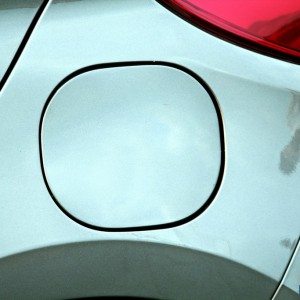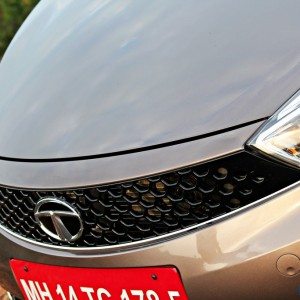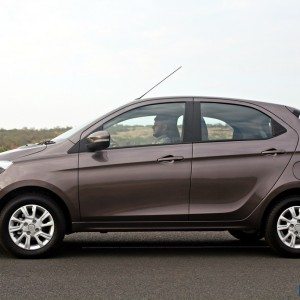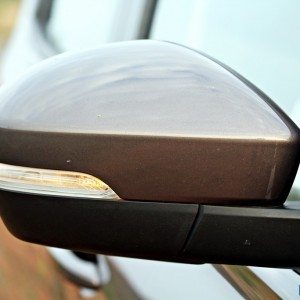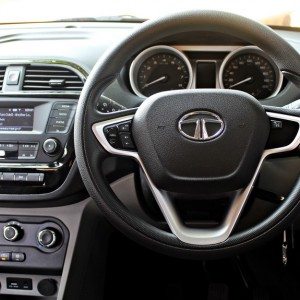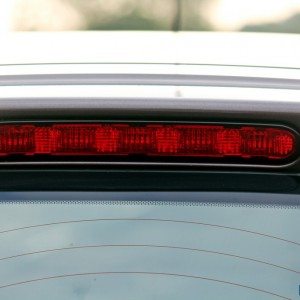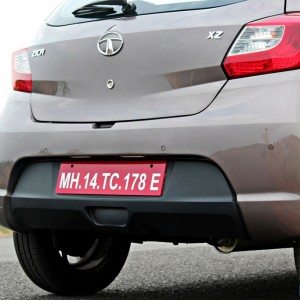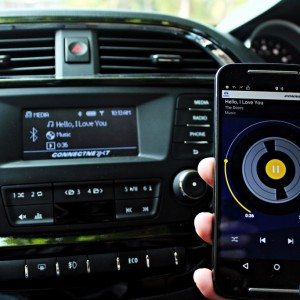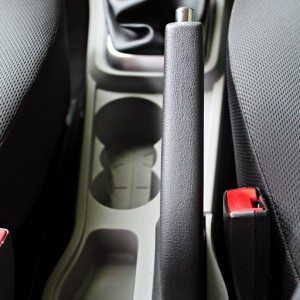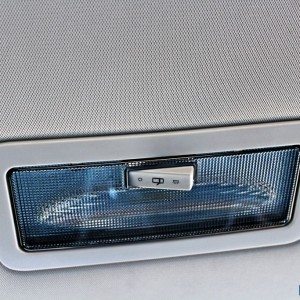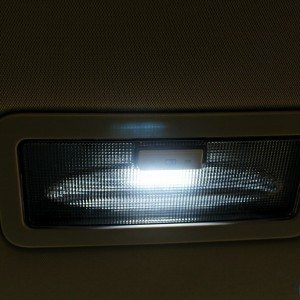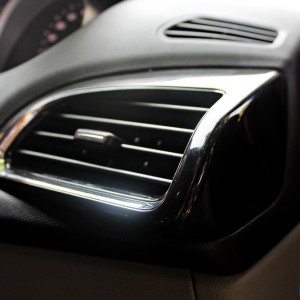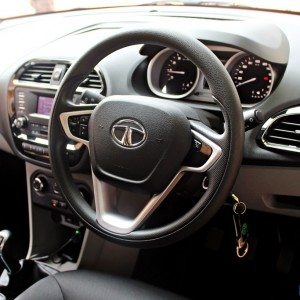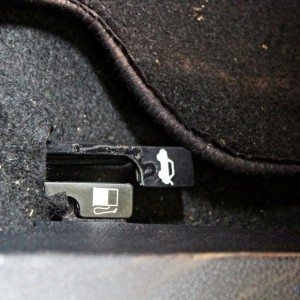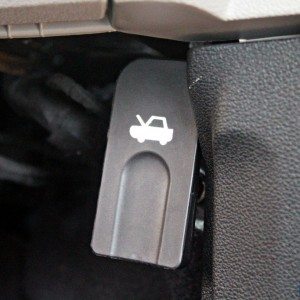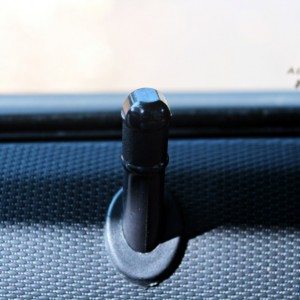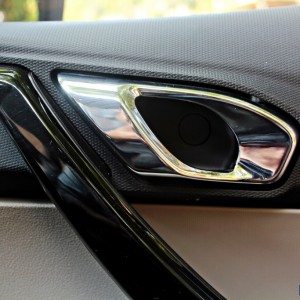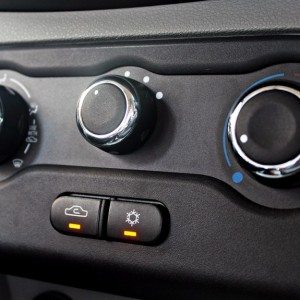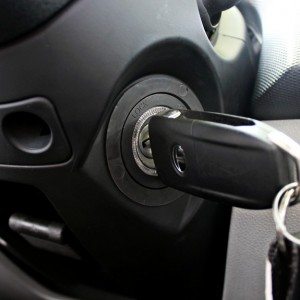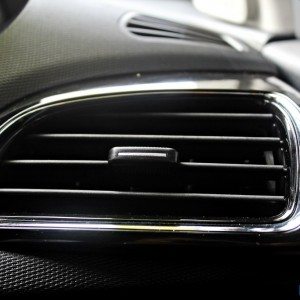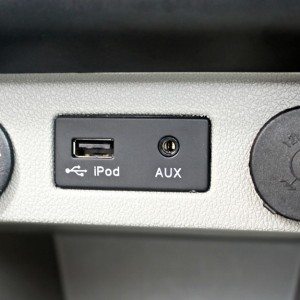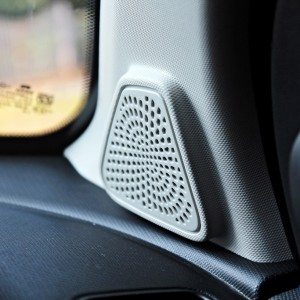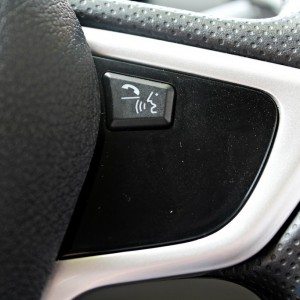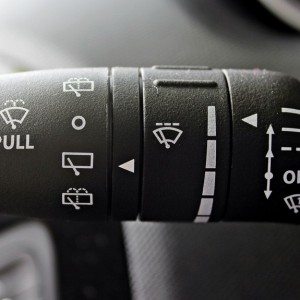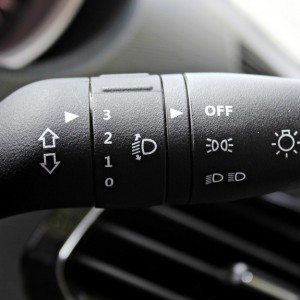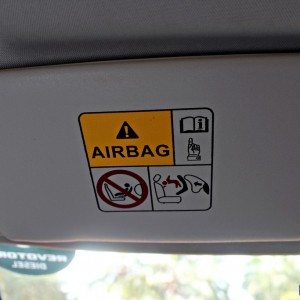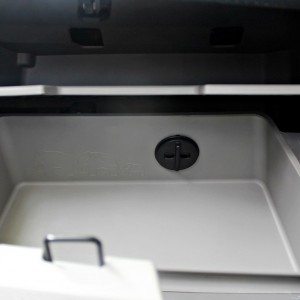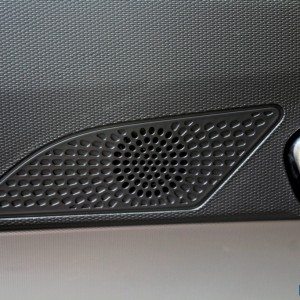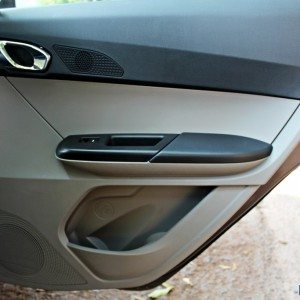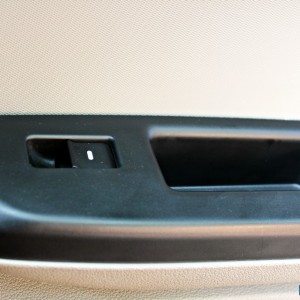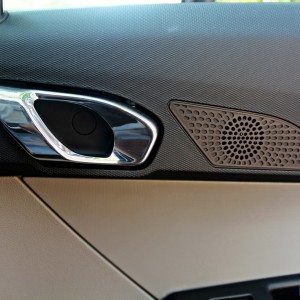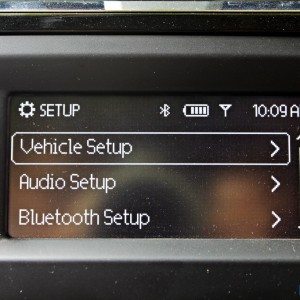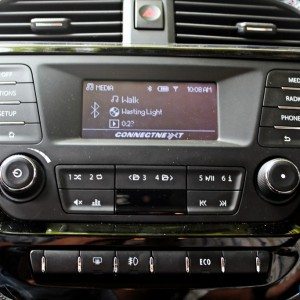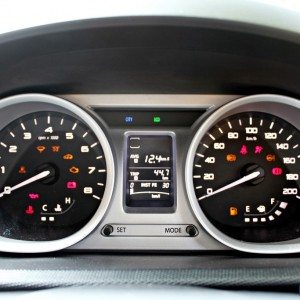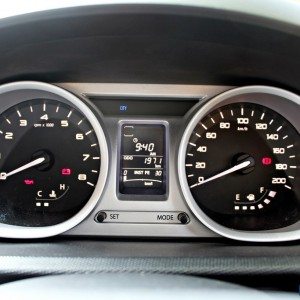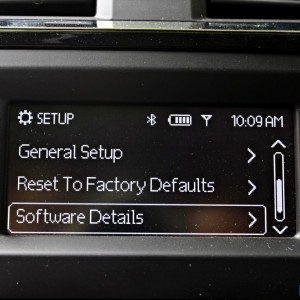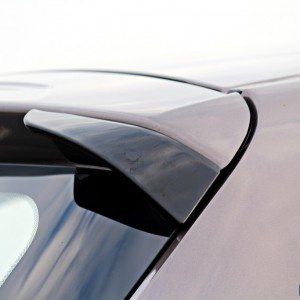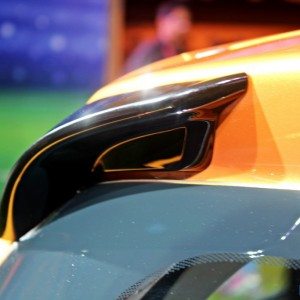I’m really bad with flowery introductions with traces of well paraphrased history lessons, so let’s come to the point. The Tata Tiago is here to simply do one thing – turn around the company’s ailing fortunes. It heralds the turnaround for a company that gave us the Indica, way back in 1997, and made a nation proud. The all-new, minty fresh Tiago is expected to cause similar levels of stir in the minds of both the youth and Tata loyalists alike. How does it perform? We find out.
Images: Chirag Mondal and Tata Motors
Design
Tata Motors are quick to point out that no living organisms or warfare related objects were the source of inspiration for the Tiago’s design. Instead, the design team sat down and decided on a clean design that’s matured, organic, contemporary, somewhat European, and well proportionate; a design that’s friendly, inoffensive, innocuous, yet possessing the brand’s signature style. A confident stance and road presence comes naturally thereafter. The design work spans three years and three locations across the globe, which includes UK, Italy and Pune in India.
Well, it seems like I’ve summed up the Tiago’s appearance before even dissecting the details, so here goes.
The front end is characterized by an evolution of Tata’s smiley grille. Punctured with hexagonal motifs that decrease in size and ‘fade out’ as they reach the headlamps on either side, the grille also hosts the new three-dimensional ‘T’ logo. The subtle chrome strip that runs across the grille’s base is being addressed as the Humanity Line.
The wraparound headlamps are fairly large, and are shaped with pointy corners connected with taut curls. Inside, they feature smoked treatment, black bezels and a floating piece of chrome trim that flows like a visual continuation of the Humanity Line – pretty neat.
The bumper, which features subtle creases under the headlamps, integrates seamlessly with the fall of the grille, accounting for a flat-nosed snout that’s almost perpendicular to the ground. The lower half of the front bumper, though shaped well, feels a little out of sync with the rest of the car’s design. It’s got a large opening that has a more hard-edged flavor than the rest of the fascia, which, as we saw, features lines following a curveball’s trajectory.
The air-dam has a couple of spindles running across, while featuring hexagonal inserts which are more geometrical and precise than the ones used on the grille. Oval fog lamps nestling inside chrome bezels add character, while subtle extensions on either side of the bumper look sporty indeed.
Moving upwards, there’s a clamshell bonnet featuring oh-so-subtle creases on either side, which gently fall off to meet the front fenders. Interestingly, the bonnet’s frontal shut line isn’t fused with the grille. Instead, there’s a body colored strip that sits in between the grille’s upper edge and the bonnet’s shut line.
The black plastic trim that hosts the windscreen washes and wipers has its share of funky details, which include similar, size shifting, hexagonal motifs from the grille arranged harmoniously.
The sides are personified by three prominent character lines and well contoured surfacing. The first of those lines emanate from the headlamps – what starts of as a ridge in the bodywork, rather than a character line, ultimately turns into one as it rears up the base of the window line and ends after serving a kink at the lower end of the rear window.
The second character line is the strongest, and is affectionately called the Slingshot Line in Tataspeak. It originates from the front fender flare, hosts the triangular scooped door handles, and enters the tail lamps. This line gives the Tiago’s design its strength, and is one of the elements that accounts for its confident and well planted stance.
The third and final character line lies at the lower half of the body. It closely follows the door shut lines, even as they bend to make way for the rear wheel arch, and fades away into the arch flares. It successfully holds up the rapidly changing surfaces as they move from the front to the rear.
The Tiago’s silhouette is very today and chic – a two-box shape with just the right amount of curves to titillate its intended clientele. The Tiago’s fairly large glasshouse doesn’t feature a rear quarter glass, while the B-pillars are trimmed with black plastic.
The wheel arches are conventional and well rounded, hosting 175/65 R14 tubeless rubber wrapped around 14-inch alloy wheels.
The rear end is brought up by sharply styled, petal shaped tail lamps that dictate most of the bodywork contours on the compact tail gate. A trace of the Slingshot Lines can be found on the tail gate as well, bridging the tail lamps and hosting the three-dimensional ‘T’ logo, which commands its own bodywork extension to rest itself.
The tail lamps themselves extend a fair bit into the sides for added “dynamism” I guess; an abused word in car design. The compact rear window has two kinks on either side, a rear wash/wipe feature and demister lines that run around in arcs instead of straight lines.
The integrated roof spoiler has a couple of black elements on the edges that apparently aid aerodynamics – no, not for Porsche rivaling down force, but in interests of better fuel economy and let the Tiago slip through the air better.
The lower half of the Tiago’s rear end is half as exciting as the rest of the design, as it features a large bumper with vanilla lines hosting a blacked out registration plate recess, a rear fog lamp and a hidden exhaust pipe.
To put the Tiago’s well-executed design into numbers, it measures 3,746 mm in length, 1,647 mm in width and 1,535 mm in height, while wheelbase measures at 2,400 mm; 70 mm shorter than Bolt. Unladen ground clearance is a resounding 170 mm. The Tata Tiago will be available in a choice of six metallic colors – Sunshine Orange, Berry Red, Espresso Brown, Platinum Silver, Striker Blue and Pearlescent White. On the outside, Pratap Bose, Head of Design at Tata Motors, and his team have done a fantastic job; now let’s move inside and see what they’ve conjured up.
Interiors
After the exteriors, the interiors are the Tiago’s second trump card. The interiors feel distinctively premium, and when Tata says that the choice of materials and color schemes are tasteful, they aren’t just trumpeting about their work.
The upper half of the well designed dashboard is layered with soft touch black plastic with a geometric texture that does feel and look premium. The lower half gets an off-white coloration; and so does the lower half of the door trims, the pillars and the instrument console. Tata has finally given beige the boot.
The well integrated center console is trimmed with a piano black insert, and so are the organic looking side air vent surrounds. However, Tata will also offer the side air vent surrounds in body color, but only in case of Sunburst Orange and Berry Red colored exteriors. That said, in case one opts for the other colors, the air vent surrounds can still be custom painted in body color at the dealership level.
Traces of chrome can be found in the air vent borders, the rotary knobs and inside door handles, while the knitted headliner, finished in off-white, is a treat to touch, strengthening the up market appeal by a few notches more. The seats are upholstered with black, pleasingly patterned fabric.
The seats themselves are comfortable and cushiony, with the front thrones featuring excellent lumbar and thigh support, apart from integrated headrests which are equally cushiony. The rear row has adequate space in all directions, and there’s no feeling of claustrophobia. With the front seats pulled all the way back, legroom at the rear becomes a squeeze though.
The Tiago’s interiors feature 22 storage spaces, which include driver and passenger door pockets that will swallow two 500 ml bottles side by side, twin cup-holders between the seats, a tab holder in the glove box, a driver’s side pocket in the dashboard, and a storage space in the center console just below the 12 V power outlet, amongst others. It seems like Tata has taken criticism about the Bolt’s lack of usable interior space very seriously. Boot space stands at 242 litres.
The steering wheel is the familiar, three spoke, multi-function ‘Designnext’ unit found on the Bolt and Zest. Its hard plastic surfaced rim is nowhere as satisfying to hold as leather wrapped rims, but we’ll take it.
Behind it lies an all-new, twin pod instrument console with clear, legible dials bearing all the tell-tale lights. Between the pods lie a Bolt/Zest-style TFT display which throws up instant fuel economy readings, average fuel consumption, distance-to-empty, a gear position indicator and trip/odometer readings. The Tiago also gets City and Eco driving modes; more on that later.
Ergonomics are spot on, with the steering wheel being adjustable for height, and everything, including the controls and the Bolt/Zest sourced gear lever falling within easy reach of the driver. The pedals are well spaced too.Visibility all around is excellent, with large windows and an expansive windscreen. The compact rear window does hamper rear end visibility a tad though, in spite of Tata Motors placing the rear wiper lower than usual.
The interiors, although not as airy and spacious as the Bolt, are a fantastic place to be in, especially after you’ve soaked in the little details and turned on the infotainment system.
The top of the center console gets a scoop of space to place the customary god statuettes, or your cellphone
Knitted and textured headliner looks and feels premium; interior light is placed at the center, rather than being at the front.
A mixture of ventilated and textured black fabric is used to upholster the seats.
Attention to detail: the tweeters feature round motifs in the center which become hexagonal as they move outwards.
Hidden details: Look closely and you’ll notice three elephants etched on the inside of the cooled glove box.
Sunburst Orange and Berry Red colored Tiago get these body colored side air vent surrounds; the rest get piano black.
The door locks have an old school style; but get the job done.
Potent air-conditioner chills within minutes; rear occupants won’t complain either.
Boot space is rated at 240 litres, whcih increases significantly with the rear seats folded (below)
Infotainment
The Tiago’s center console hosts an infotainment system that’s at least two cuts above anything offered in the segment. Sourced from HARMAN, the infotainment system comes with features like play music via FM/AM, USB, iPod, Aux and Bluetooth. What’s more, it features as many as 8 speakers.
Sound quality is mind-blowing and intense. The crispness of the sound, the clarity of both the high and low notes all came together to provide aural pleasure like no other in this price bracket. Daft Punk never sounded so awesome in a B-segment hatchback that just left the factory. Even in full volume, the sound does not crack at all; only the rear view mirror vibrates to the empowering bass notes of “Lose yourself to Dance”. Before glass shattered, we had to turn the music down. And then we discovered the Equalizer, which left our ears ecstatic.
Smartphone assisted navigation is via the Navi Maps app, with the small LCD display in the center console just displaying arrows and numbers, along with the speakers blaring aural assistance. The pre-loaded maps also work offline, in case you venture into the hinterland. Music fades out when the navigation lady chimes in with directions.
Juke-Car app
A major portion of Tiago buyers will be the young and trendy who know and love their music. For them, the Tiago offers the Juke-Car app, a first-in-class feature that utilizes the mobile hotspot feature to create a virtual network and host a service for sharing list of available songs in the device. Up to 10 smart phones can be connected at a time, and users can place their requested song in the queue. Apart from the one master phone that connects to the infotainment system via Bluetooth and hosts the Juke-Car app, no other phone needs to be connected to the internet.
In fact, the sound quality is so good and the minimalistic navigation system getting the job done, it leaves you wondering whether one actually needs a touch screen unit in this segment. Hats off to Mr. Girish Wagh, Senior Vice President, Program Planning & Project Management, and his team for pulling this feature off victoriously.
The interiors are very well put together as well, with levels of fit and finish unlike any Tata vehicle that left the production line. Although there were no squeaks or rattles; just resounding thuds, when we were ploughing the Tiago over bad roads, it still remains to be seen how the build quality will stand the test of time. Because Tata doesn’t really have a spotless track record when it comes to cars getting squeaky and things falling apart over time. But all things considered, things look really promising in this department.
The Tiago also features, foldable key, roof antenna, vanity mirrors, power windows (all four), electrically adjustable ORVMs, rear parking sensors and cooled glove box. Safety features include dual front air bags, 3-point seat-belts (front/rear), central locking with speed sensing automatic door locks, clutch lock, day & night inside rear view mirror and an immobilizer.
Engines and performance
Revotorq 1.05L
Diesel power for the Tata Tiago comes from an all-new, 1.05-litre, 3-cylinder, turbo-charged engine. Developed in house and the very first engine under the newly coined Revotorq family of diesel engines, the three pot motor develops 70 PS of peak power at 4000 rpm and maximum torque of 140 Nm available between 1800-3000 rpm. It is mated to a new 5-speed manual transmission.
Technical jargon that accompanies this diesel engine includes dual overhead camshafts, central injectors, optimized valve lift, a low friction crank, and electronic throttle control – all in interests of better fuel economy and good drivability. The kerb weight of the Tata Tiago diesel is 1,080 kg; 68 kilos more than the petrol derivative.
Crank it up and initial impressions are positive, though it does sound a bit agricultural on the outside. The insides are relatively silent, even when the revs are dished out in their higher echelons. Thanks to the balancer shaft, this three banger sipping the dirty fuel isn’t lumpy at idle; nor does it have ugly vibes flowing in through the steering wheel or gear lever – both characteristics of having an odd number of cylinders, especially three. Refinement levels are commendable for a small capacity, oddly displaced and cylindered diesel engine. Hefty sound insulation on the underside on the bonnet helps.
Cutch action is light, but the same cannot be said about the transmission, which isn’t the slickest unit around. On the narrow, windy roads of south Goa, the motor proved to be moderately enthusiastic, with a small punch in the chest coming in as soon as the tachometer needle crossed the 2,000 rpm mark, signaling the arrival of peak torque. Post which, the Revotorq’s flat torque curve accounts for linear performance, which isn’t particularly strong, but by no means, is lethargic either. Once we hit the highway though, and started building pace, the small Revotorq motor started losing steam, especially on inclines. Overtaking fast moving traffic does call for downshifts, and the rubbery gearbox doesn’t encourage that.
Whatever the engine lacks in outright performance, it makes up in tractability. Even in third gear at crawling speeds, with the tachometer needle hovering just above 1,000 rpm, the Revotorq 1.05L takes off without the minutest spluttering or knocking. Redline is at 4,600 rpm, and by then the tachometer needle will glow in red. The Tiago diesel cruises effortlessly at 90-100 kph, with the Revotorq 1.05L sitting comfortably at 1,800-2,000 rpm in fifth gear. Although official fuel efficiency figures aren’t out yet, the Tiago diesel is expected to be quite frugal, as we managed close to 16 km/l after a bout of really hard driving.
Revotron 1.2L
The petrol engine, christened the ‘Revotron’ is not to be confused with the similarly named 1.2-lite unit on the Bolt and Zest. Whereas the one on the Tiago is a 3-cylinder engine, the Bolt/Zest’s ‘Revotron’ engine has 4. Moreover, the Tiago’s petrol engine has an all-aluminum construction, along with variable valve timing technology – the latter being the first in segment. Displacing 1190 cc, the long stroke engine produces 85PS of peak power at 6,000rpm and 114Nm of peak torque that’s available from 3,500rpm. It also features the ‘City’ and ‘Eco’ driving modes, low-weight crankcase setup, a variable oil pump, hydraulic lash adjusters, and a chain-drive. With this engine, the Tiago tips the scales at 1,012 kg.
The petrol engine sounds more gruff than expected. No balancer shaft means that the Tiago petrol has a slightly lumpy idle too, with a negligible amount of drivetrain vibes percolating through the controls. Inside, the engine is fairly audible. Considering it’s no flat plane cranked V8, it sounds raucous, especially when revved hard.
Performance is average, certainly not ‘ZIppy’, but it gets the job done. Being naturally aspirated, performance comes as a linear surge, although the engine noise is omnipresent in the cabin. Tractability is decent, and a light clutch action here as well means that the Tiago petrol is quite at home in sticky urban traffic, although I personally preferred the diesel engine’s tractability. Redline arrives at 6,000 rpm, but the engine isn’t particularly eager to rev either. Compared to the Bolt’s ‘Revotron’ unit, refinement levels have clearly taken a step back. The fuel efficiency should latter should be fairly impressive, as a day of really hard driving saw the average fuel economy calculator throw up an optimistic reading of 12 km/l. In the Bolt, similar driving behavior will barely see 10 km/l.
The Revotron unit is a slight disappointment, considering it sits inside such a well-executed package. It’s unreasonably loud, quite unrefined and doesn’t even offer strong performance. It’s at home in the city, or while cruising at family speeds, but misses out on the fun factor that a naturally aspirated petrol motor should have.
Both engines have City and Eco modes, which pull some ECU nerves and change the throttle characteristics. While the standard City mode has a punchier throttle response, the Eco mode has a milder response in interests of better fuel economy.
The 5-speed manual transmission on both, as mentioned before, disappoints too. Shifts are long and feel imprecise. The shape of the shifter is not quite ergonomic either, as one more than a couple of occasions, my left hand just slipped off when trying to shift quickly. The brakes performed pretty well though, with their confidence inspiring bite and a good pedal feel. Top end variants feature ABS as standard, along with EBD.
Ride and Handling
The Tiago is built on a heavily reworked version of the Indica platform, and rides on independent suspension up front (Lower Wishbone; McPherson Strut with Coil Spring) and a semi-independent setup at the rear (Twist Beam with dual path strut).
Ride quality is phenomenal, as the Tiago just glides over bad patches of road like a soft roader. It’s quite cushy, the ride, with barely any irregularities on the road filtering through and potholes are done away with a resounding thump. Hurtling down the highway at three digit speeds also doesn’t bother the Tiago, as straight line stability is also quite good. I’d say that ride quality is easily the best in class.
The electrically power assisted steering wheel doesn’t offer much in terms of feedback, but weighs up nicely when speeds arise. It’s also conveniently light at crawling speeds, making the Tiago as an ideal car to potter around the city in. The Tiago is a friendly handler. When the steering weighs up at moderate speed, it’s fairly precise and mildly enjoyable on a twisty road. Pushed hard, it invariably under-steers, though the 175 section tires offer decent grip.
Verdict
The Tiago’s best attributes, listed by virtue would be its world class exterior design, the upmarket, yet practical interiors, the best-in-class infotainment system, the sublime ride quality, and last but not the least, the frugal and tractable diesel engine. The new petrol engine is a bit of a let down as regards refinement, but offers decent performance and even better fuel efficiency.
If the Bolt was an earnest attempt in the right direction, the Tiago is the the fist material proof that Tata Motors have, at long last arrived as a car maker capable of producing a car of a truly international standard. The Tiago is an impressive new small car, and going by Tata’s tradition of pricing its cars aggressively, we expect this smart little hatch to stir up its segment. With introductory prices starting from as low as INR 3,39,359, the Tiago has the makings to turn the segment on its head.

